What’s Blooming in My Pacific Northwest Fall Season Garden
It’s just about time to say goodbye to my gorgeous garden flowers now that November is here. Let’s tour my early to mid-fall season cut flower and cottage gardens and see what has been blooming here in the Pacific Northwest for the last couple of months.
I have to admit that the end of summer always hits me hard. It’s so sad to let the garden go after working on it for so long and enjoying its beauty day after day.
Early fall is such a significant time of year for transition. The garden beds were constantly changing from week to week. With that said, everything was still looking gorgeous in the early fall.
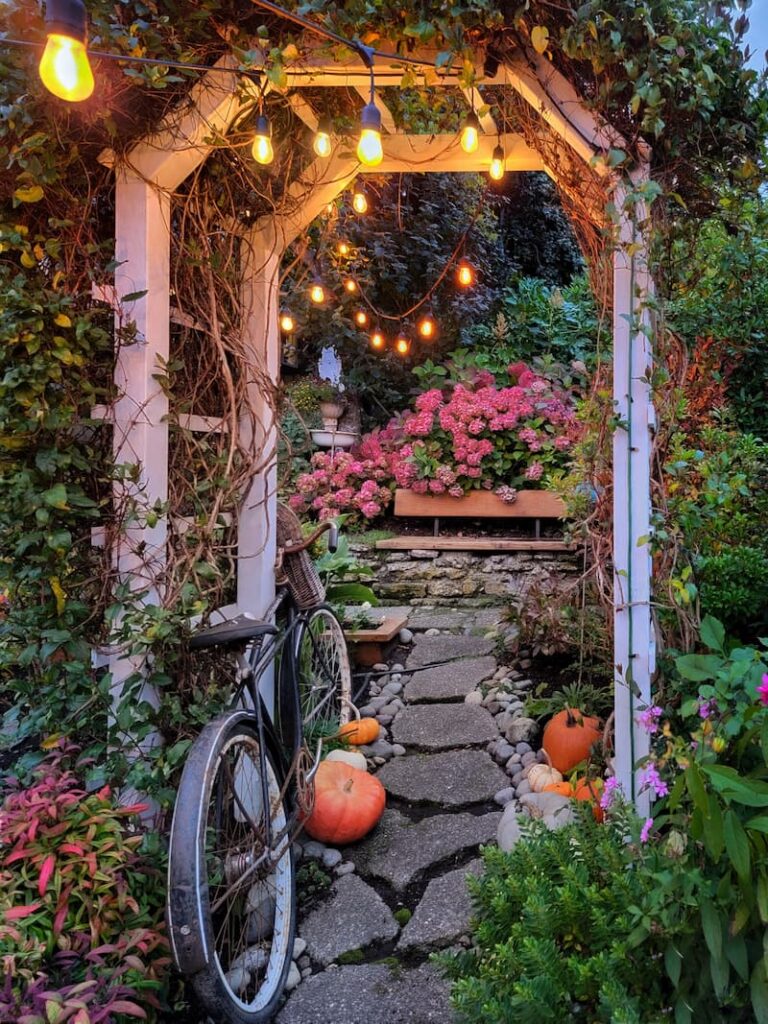
As an Amazon affiliate, I earn from qualifying purchases at no extra cost to you. My blog contains other affiliate links for your convenience as well. Click here to read my privacy policy.
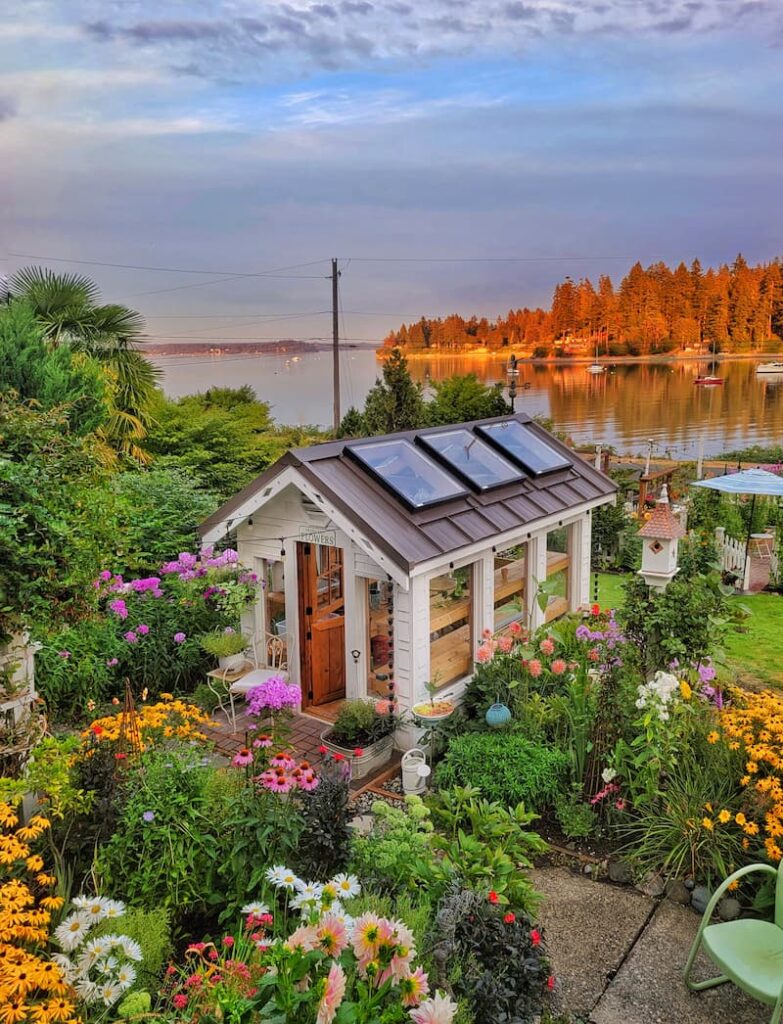
Fall Season Garden Tour
As I write this, it is pouring down rain and we have a flood and wind advisory through tomorrow. The dahlias, which were one of the last flowers to stand, are being beaten down.
And if that’s not enough, we will reach below-freezing temperatures early next week, which is a bit early around here in the Seattle area.
I can’t wait to take you on a fall garden tour of my cottage garden from September through last week.

Cut Flower and Vegetable Garden
The cut flower garden still had quite a few blooms through September.
I love strawflowers (pictured above) and they look so beautiful in the fall garden. They’re great for taking inside and drying. These blooms stuck around until the rain last week but slowed down in production once October came along.
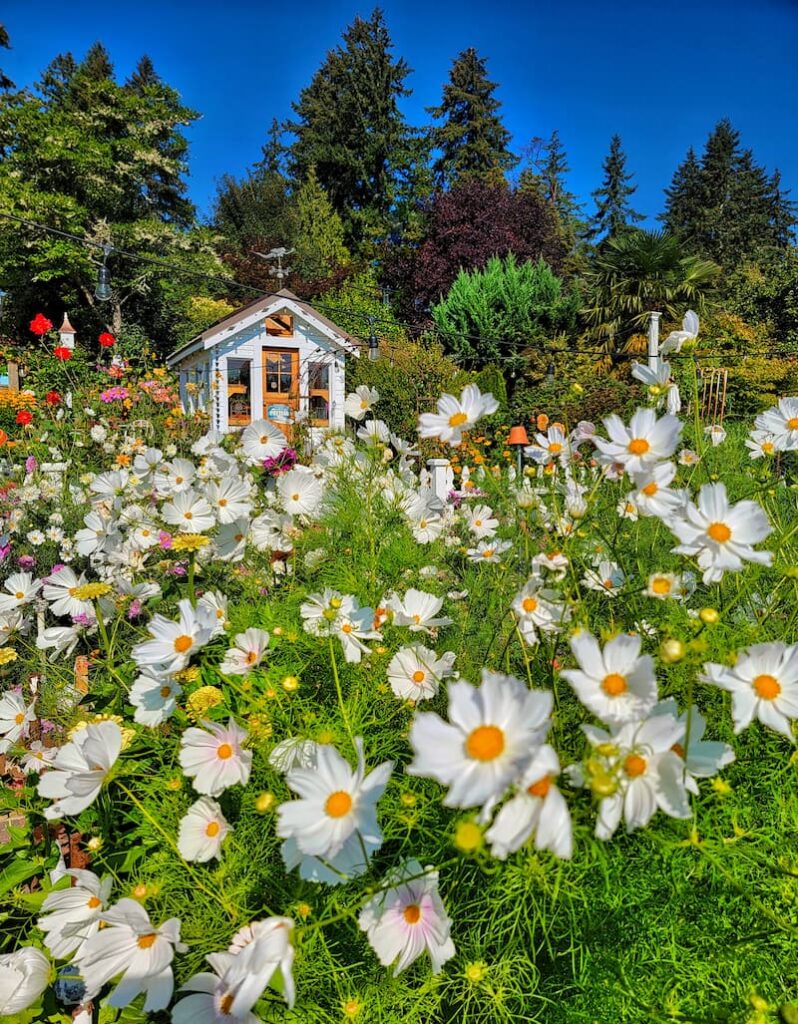
Cosmos also had a long life in the cutting garden. I had to take them out a bit early to plant the spring-blooming bulbs in the raised beds.
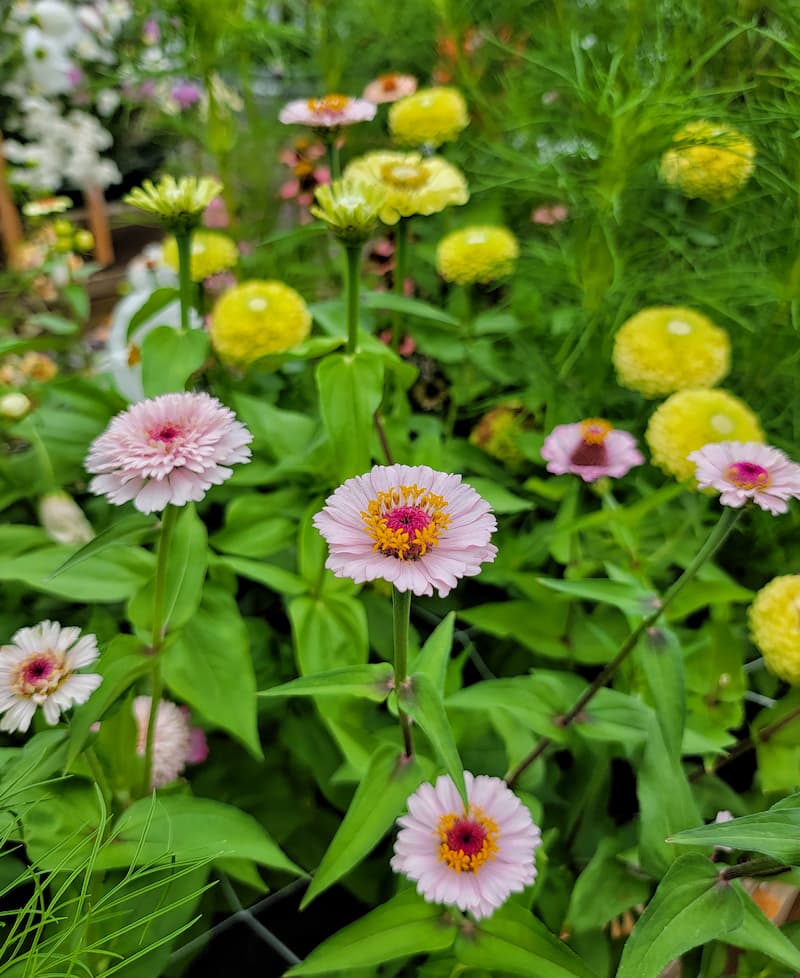
Zinnias are the third cut flower that lasted through at least October. There was a great deal of mildew on the leaves toward the end.
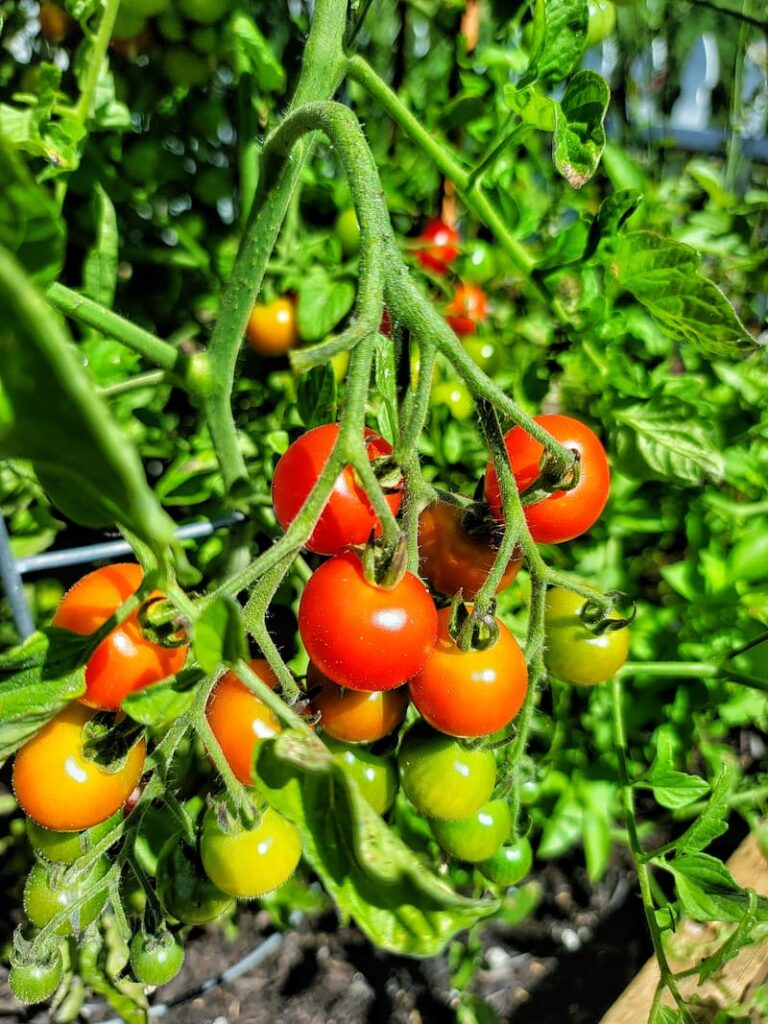
It was a GREAT year for tomatoes in our garden. Two plants overtook the entire 4’x4′ raised bed surprisingly.
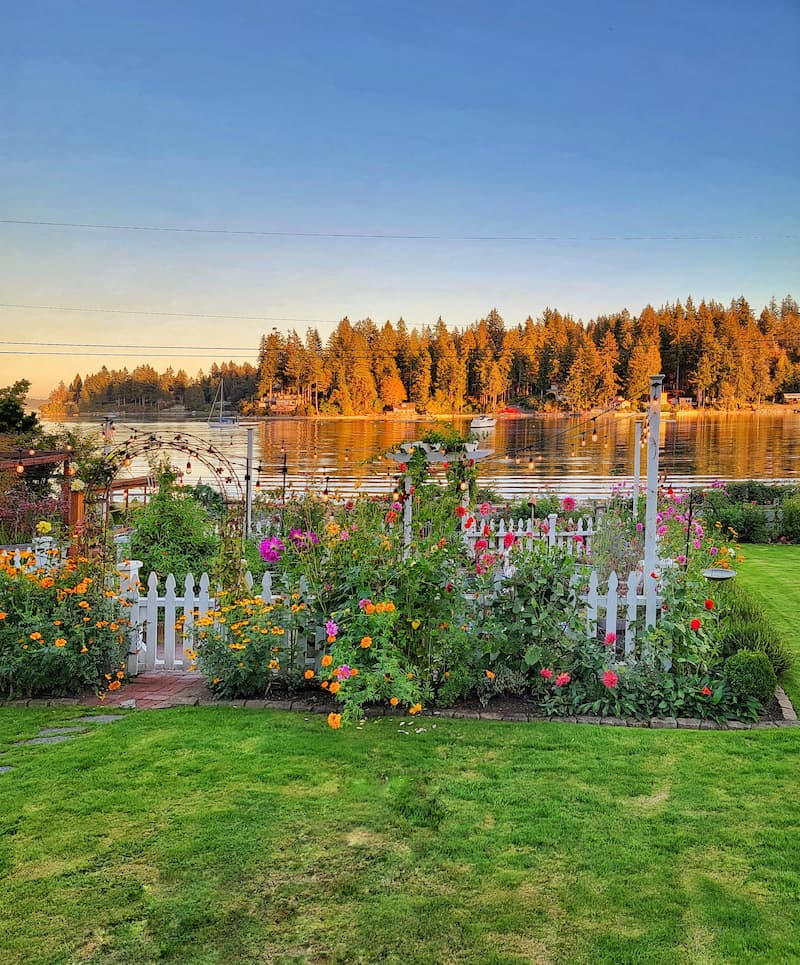
Dahlias and marigolds that grew along the white picket fence through October gave my fall garden a much-needed bright pop of color.
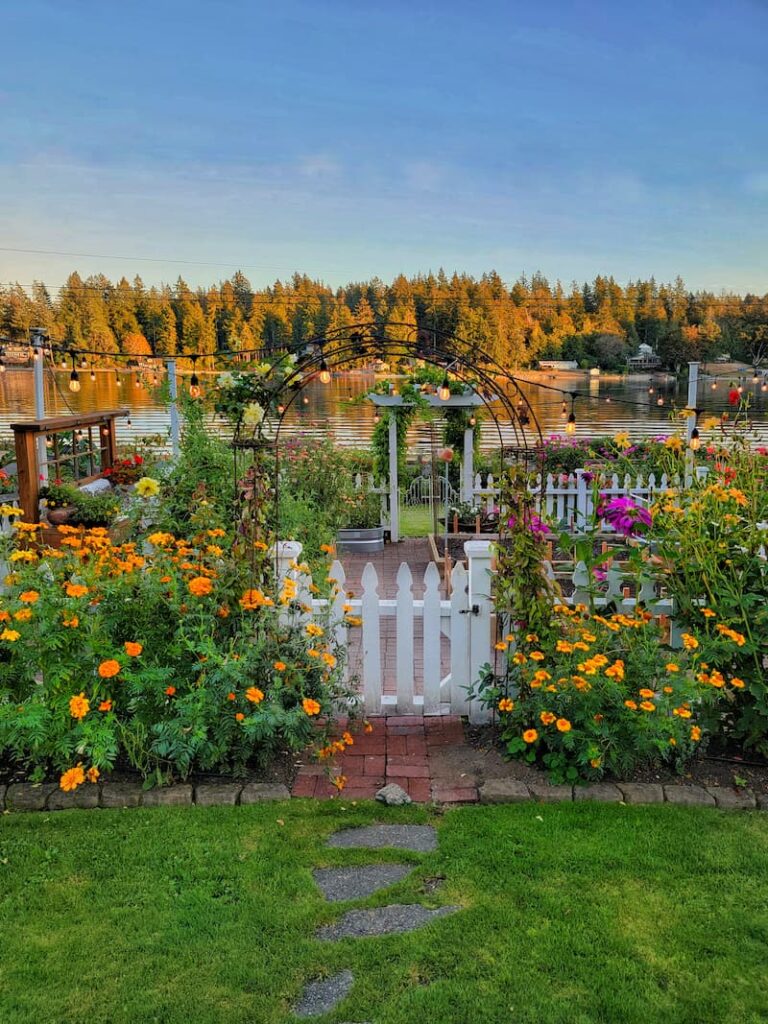
The marigolds were grown from seed and took quite a while to grow.
I don’t think they started blooming and getting taller until late August. But look at them at the end. They’ve been so beautiful in my fall floral arrangements.
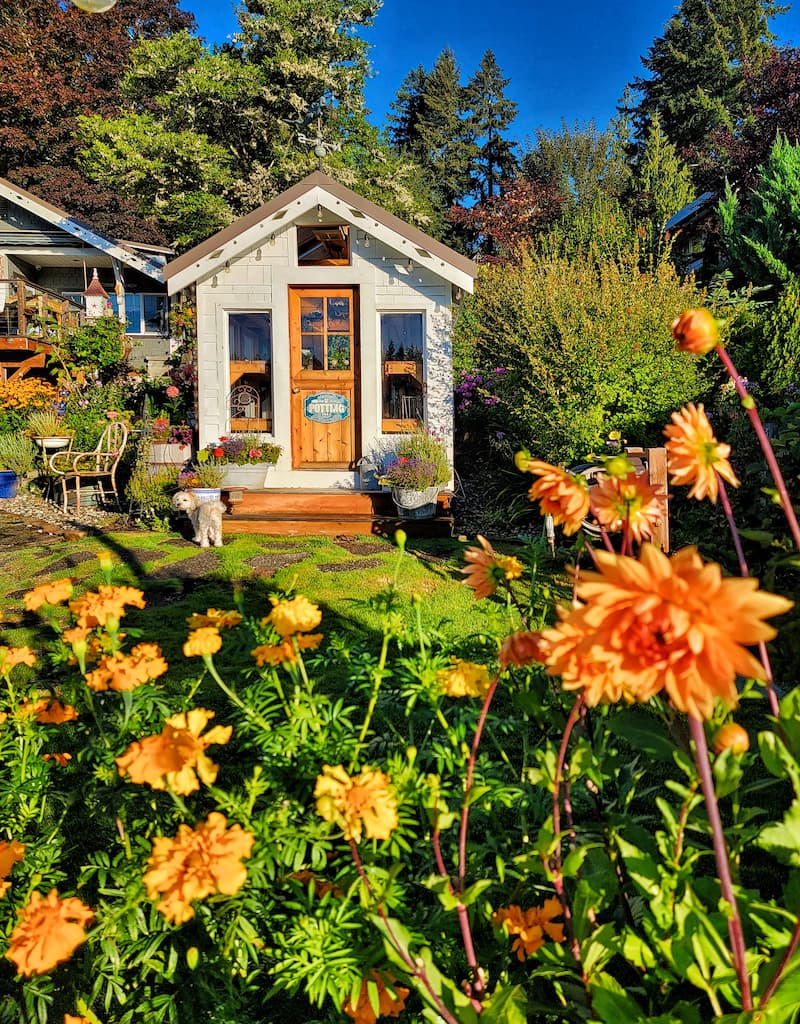
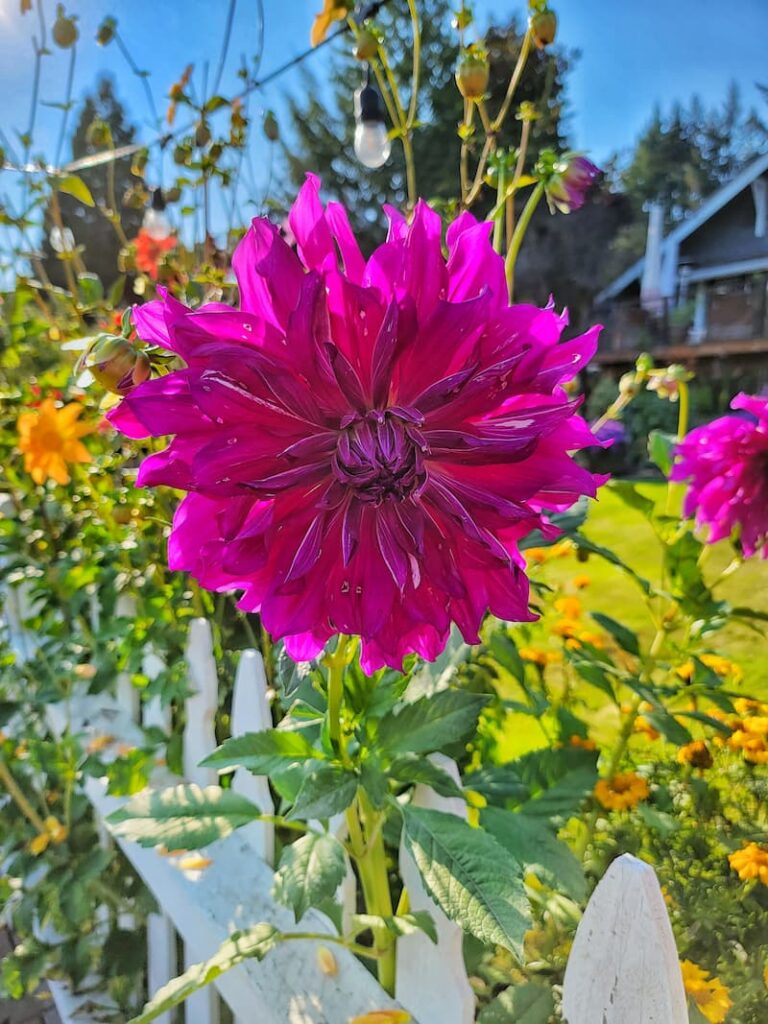
Perennials
Fall is also a great time to go to your local nursery and buy new perennials, not only for flower gardens but containers as well.
Other than dahlias, the perennial plants in the garden were slowing down going into October.
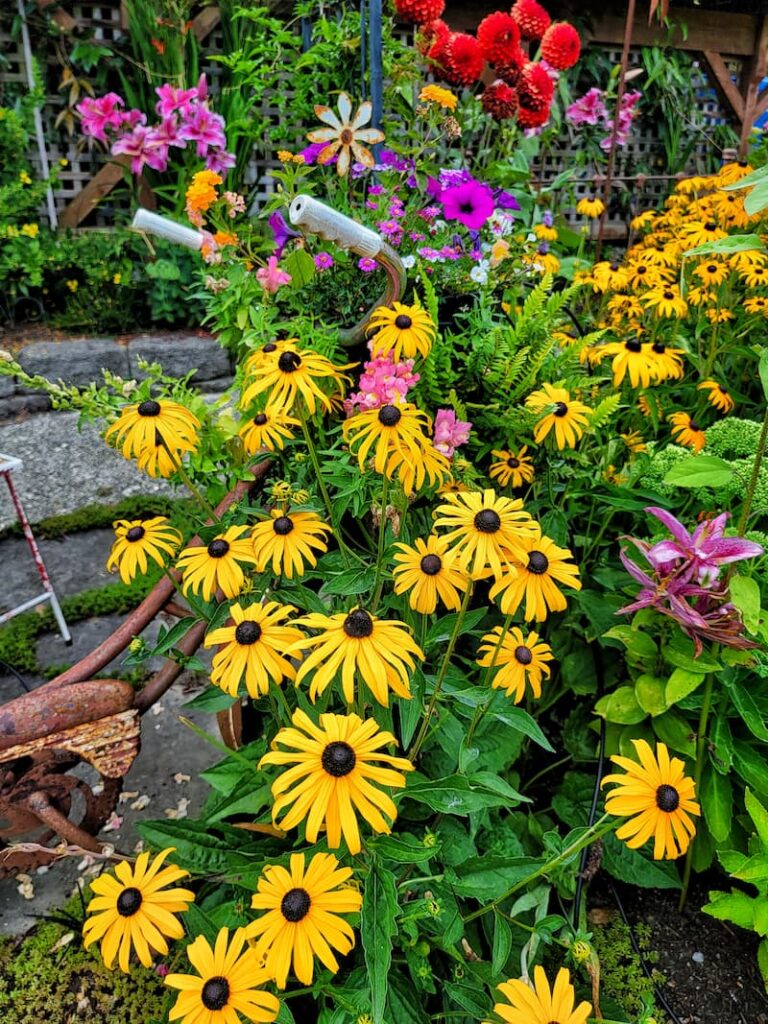
The black-eyed Susan plants were stunning in September and I was so sad to see them go once October came around.
These bright and beautiful blooms are what popped into my garden in August and September. When black-eyed Susans are blooming, it is most definitely the most gorgeous time in the garden.
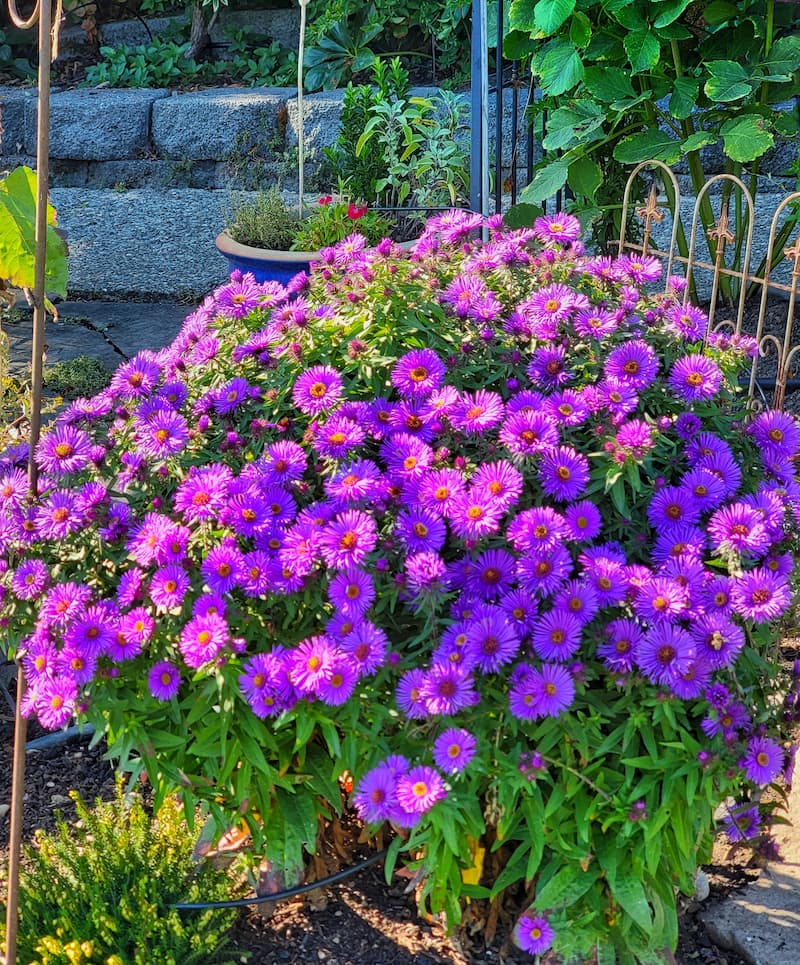
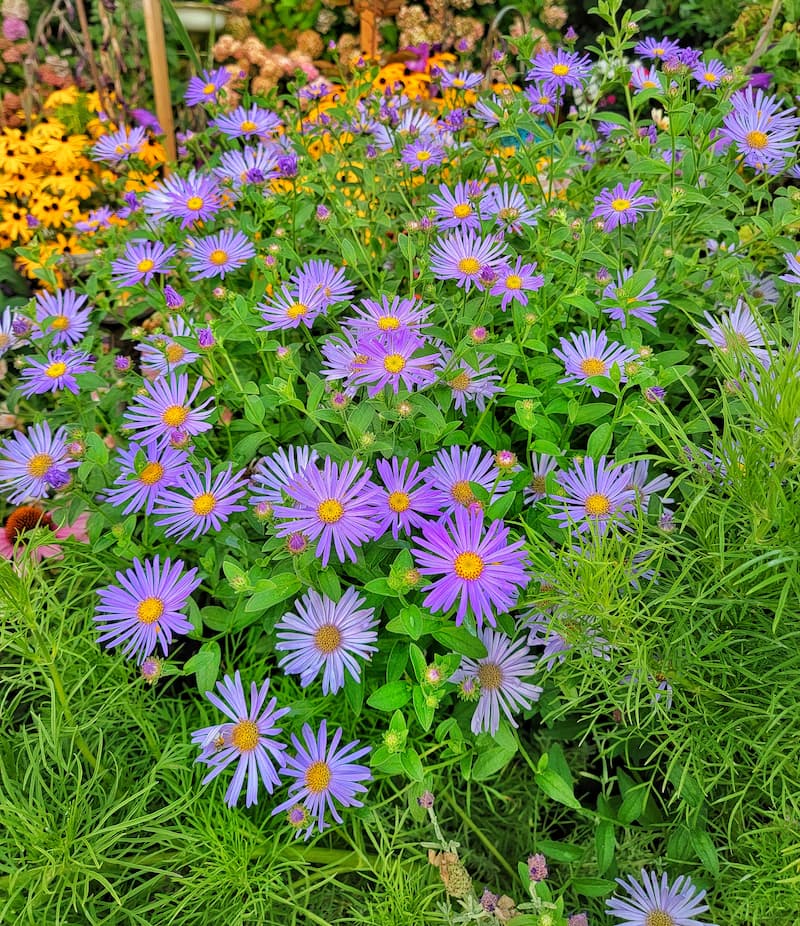
Autumn is the best time for dahlias, asters, and sedum autumn joy to bloom. Above are two different varieties of asters.
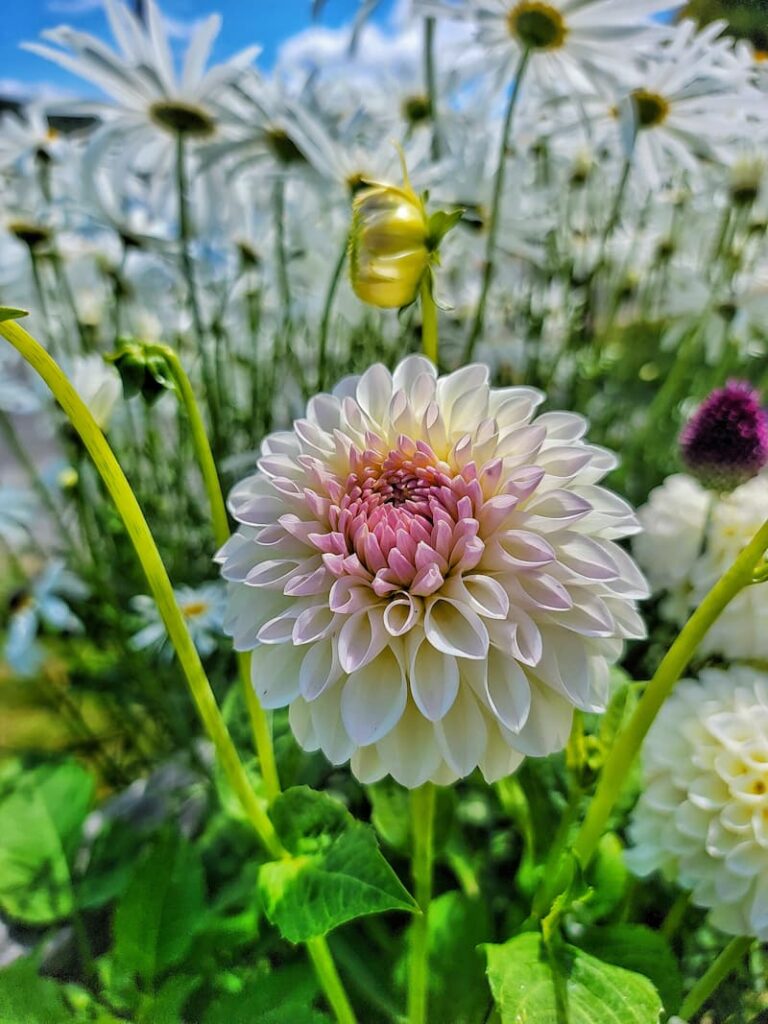
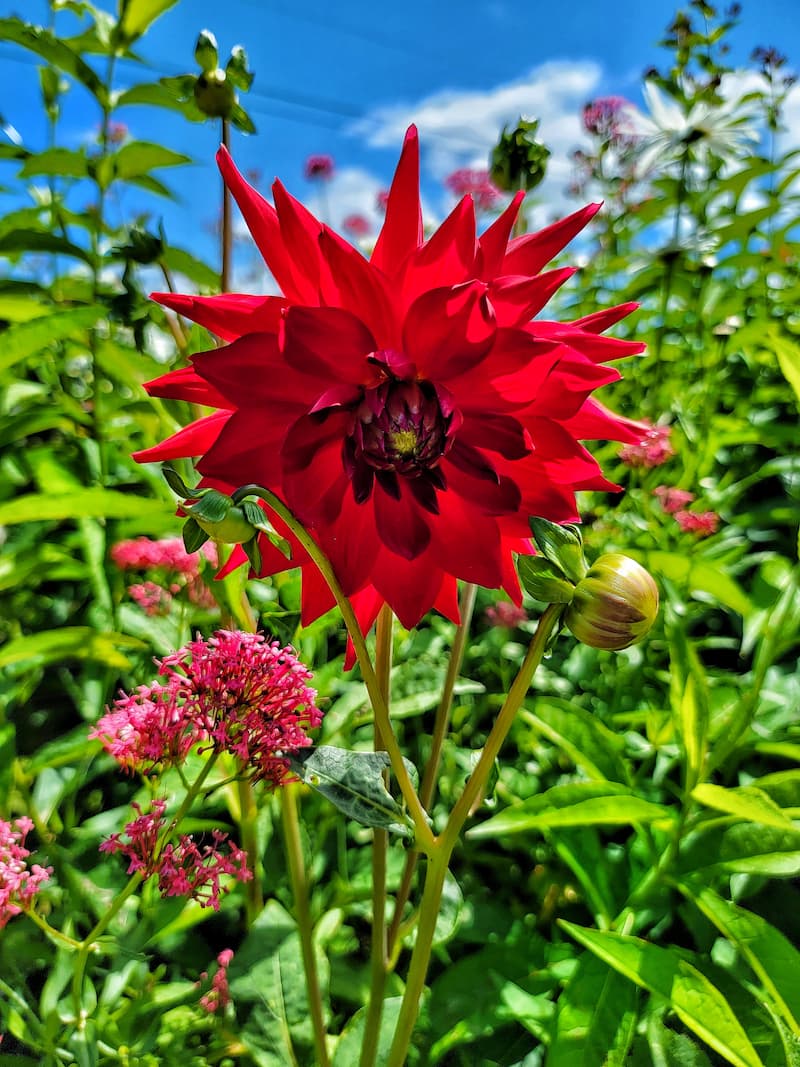
And then there are my favorite summer and fall flowers…dahlias. Here are a few pictures just to show you why.
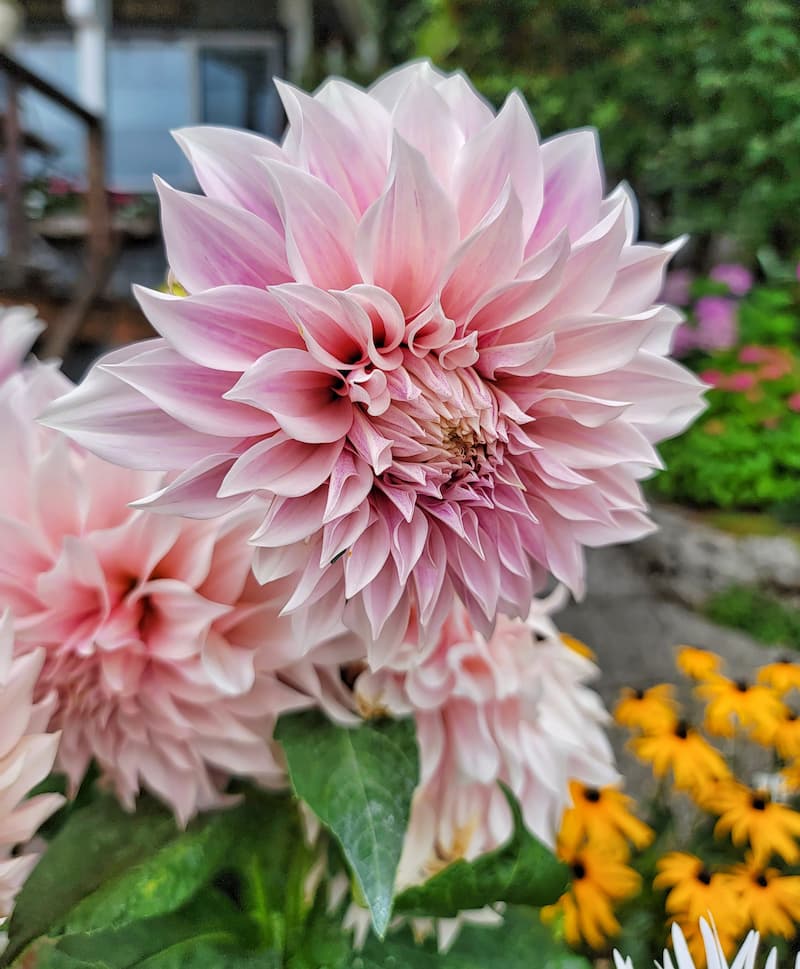
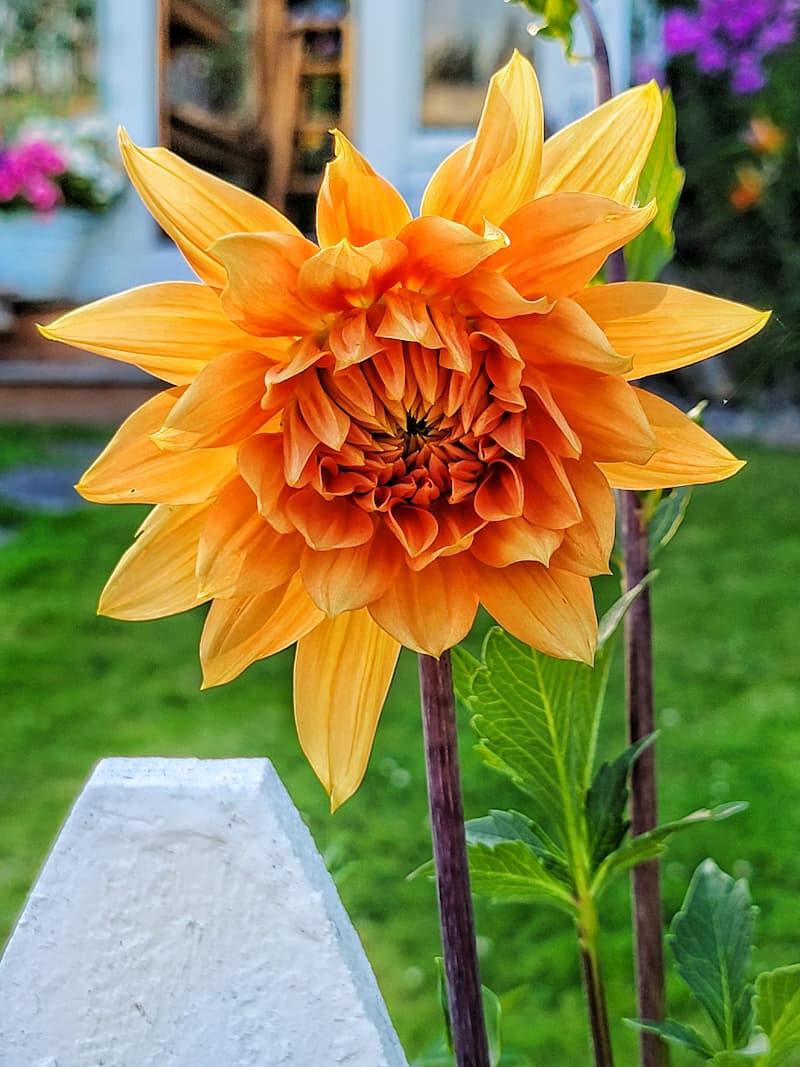
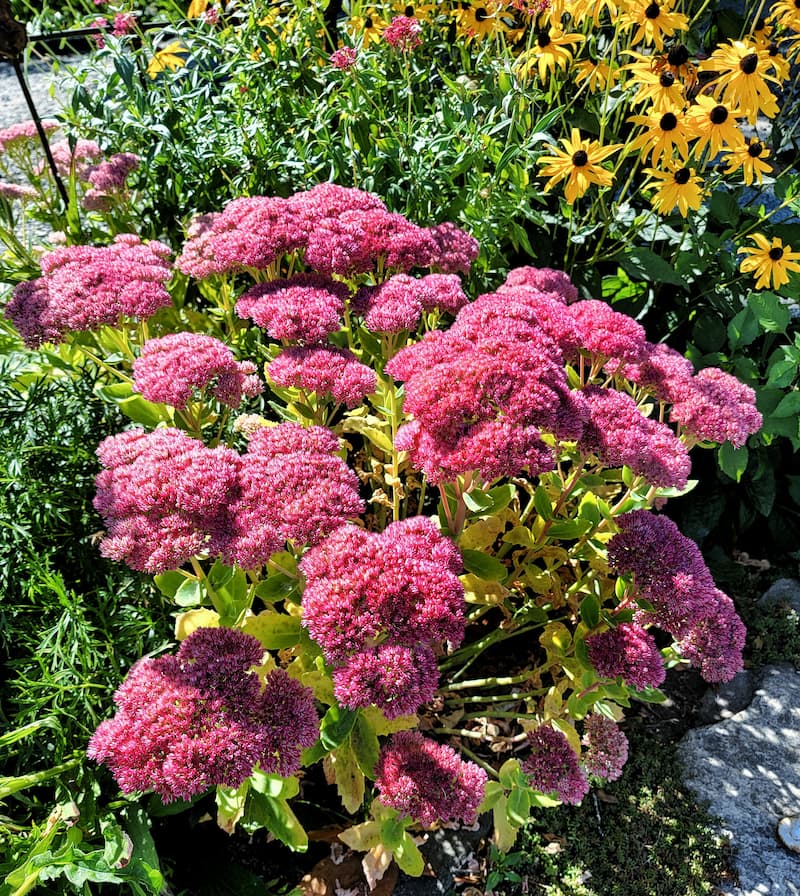
No fall garden tour is complete without gorgeous rose-colored sedum autumn joy perennials.
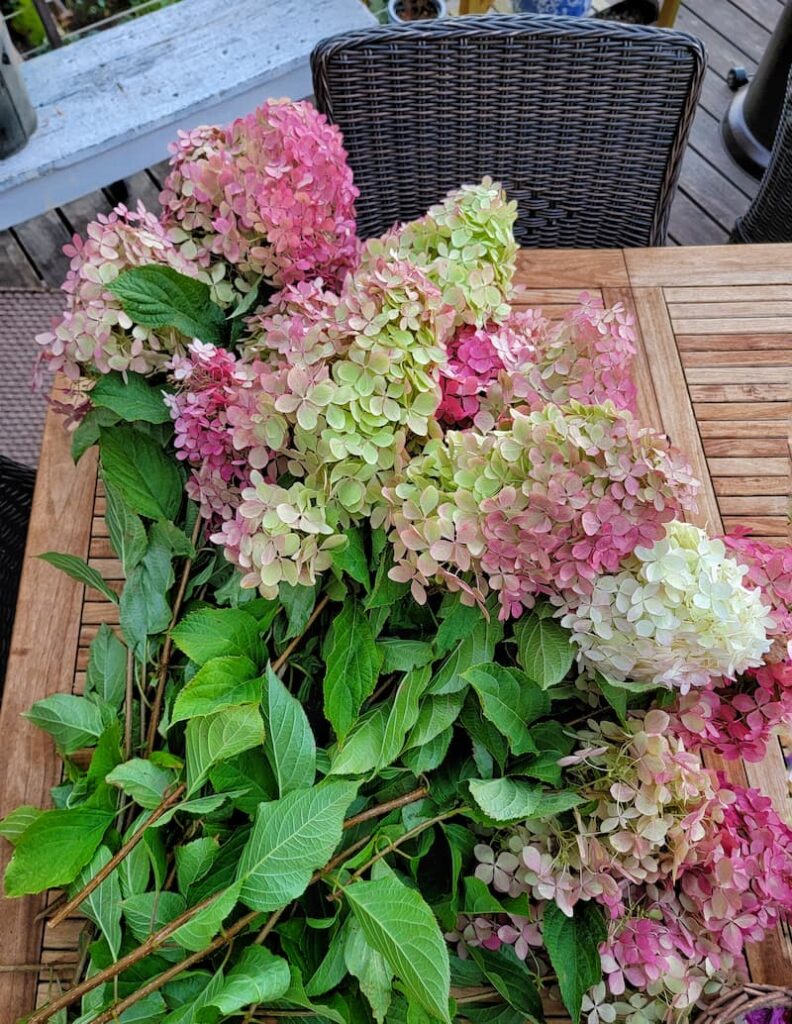
Let’s talk about hydrangeas. They are a powerhouse from late spring until late fall.
These are limelight that are changing colors for the season.
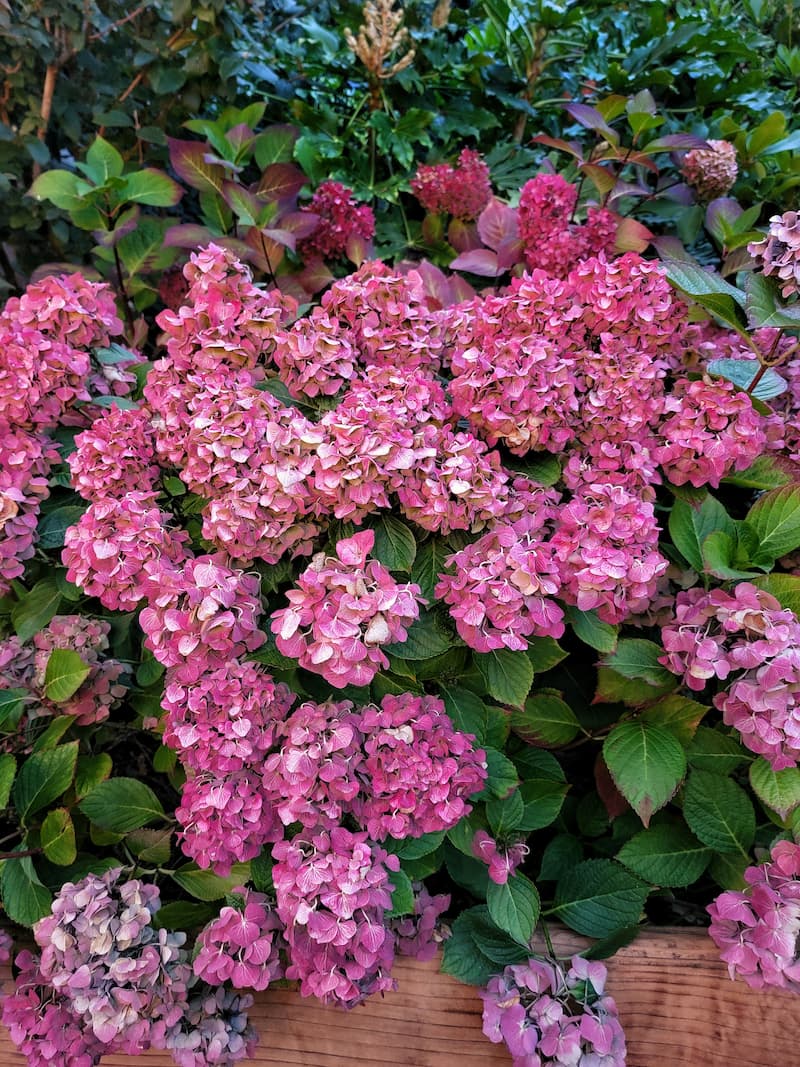
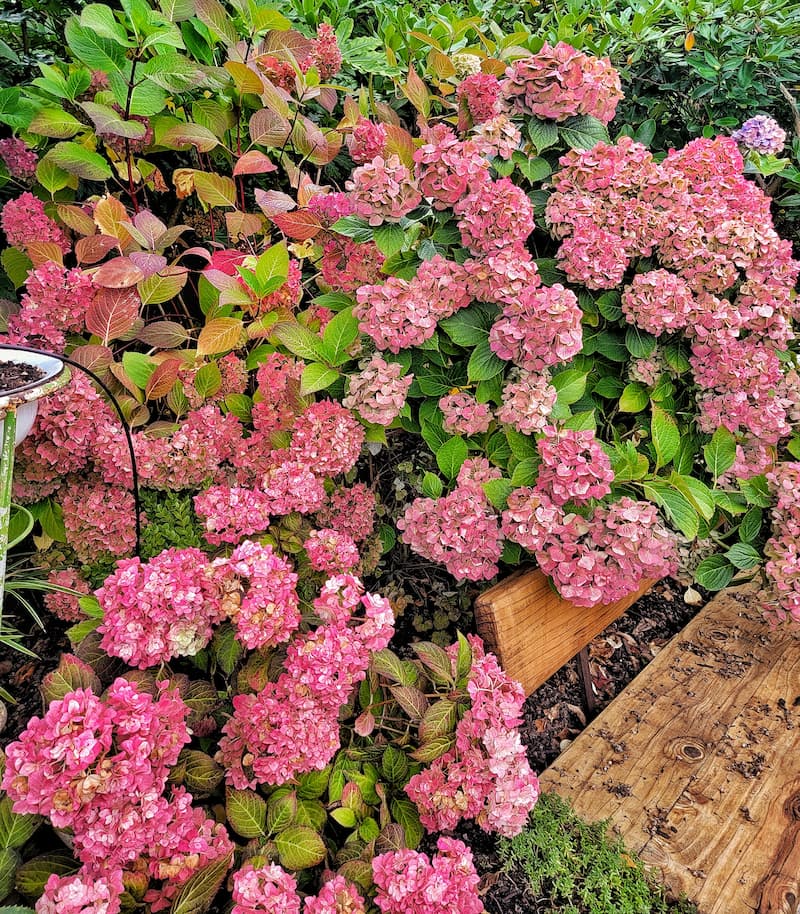
There’s nothing better than to cut your fall hydrangeas and take them inside to dry.
I still have the most incredible dried hydrangeas that have been beautiful fall home decor pieces and will continue to show off stunning colors through winter.
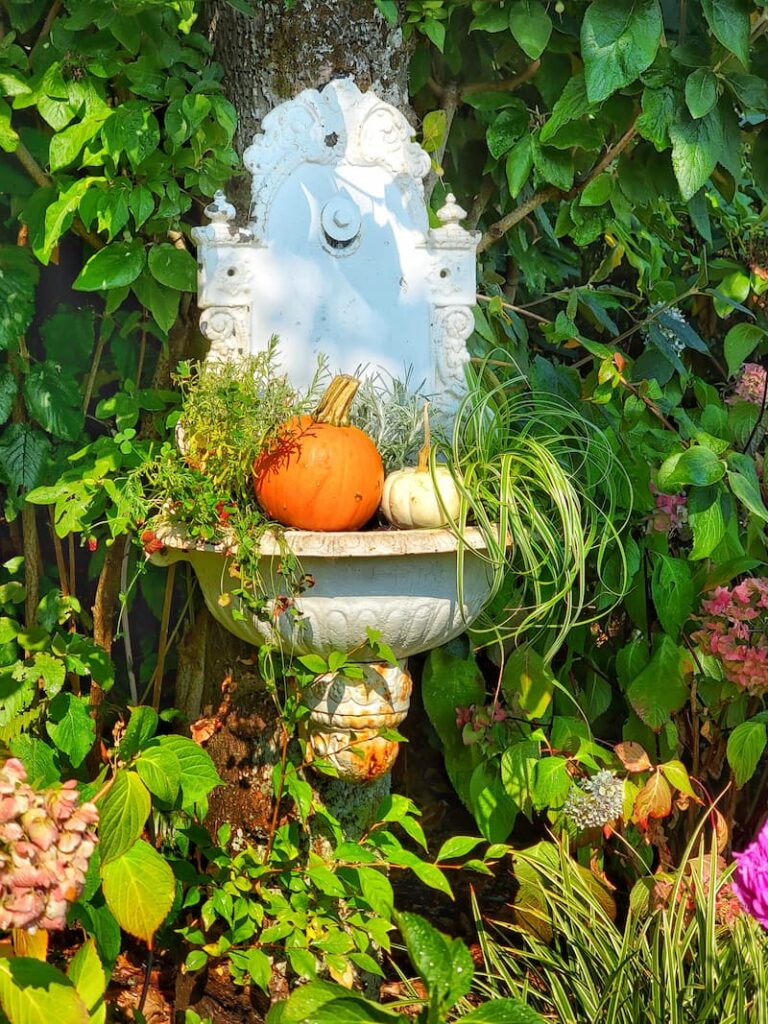
Fall Annuals and Pumpkins
Autumn annuals are such a gift and bring the most beautiful fall colors to any garden.
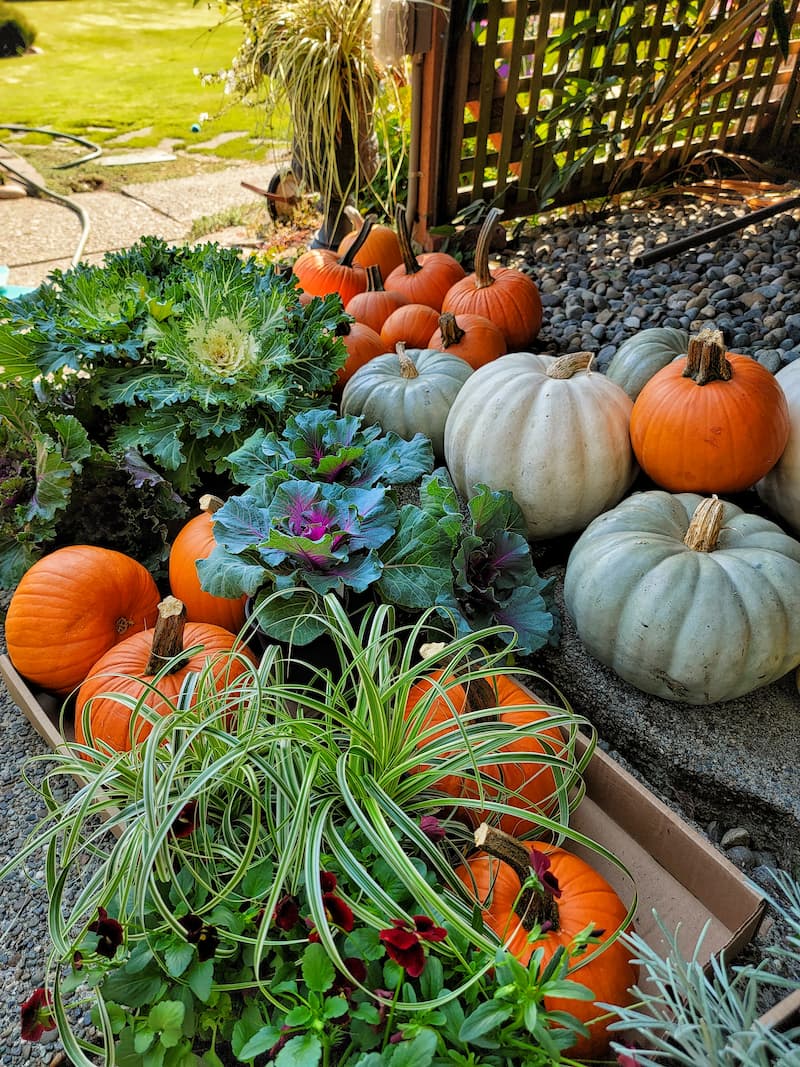
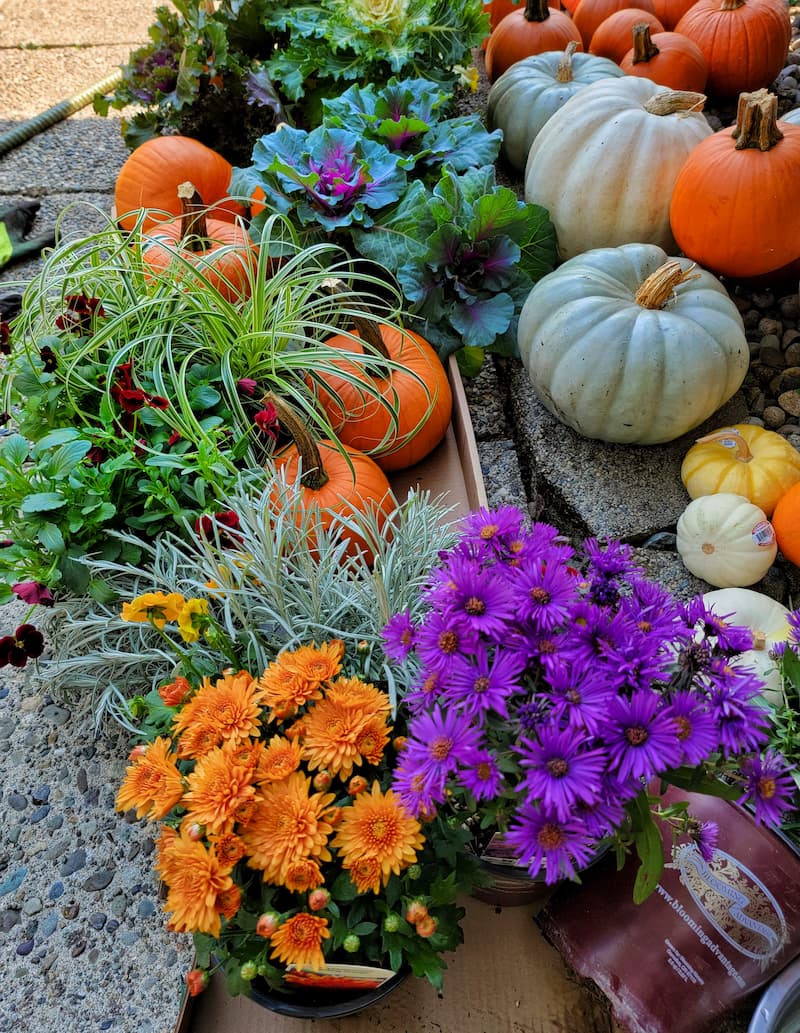
I confess I made more than one visit to a couple of our local nurseries (garden centers). After taking all the spent summer annuals out of the ground it was time to add plants and flowers back into the garden to bring it to life again.
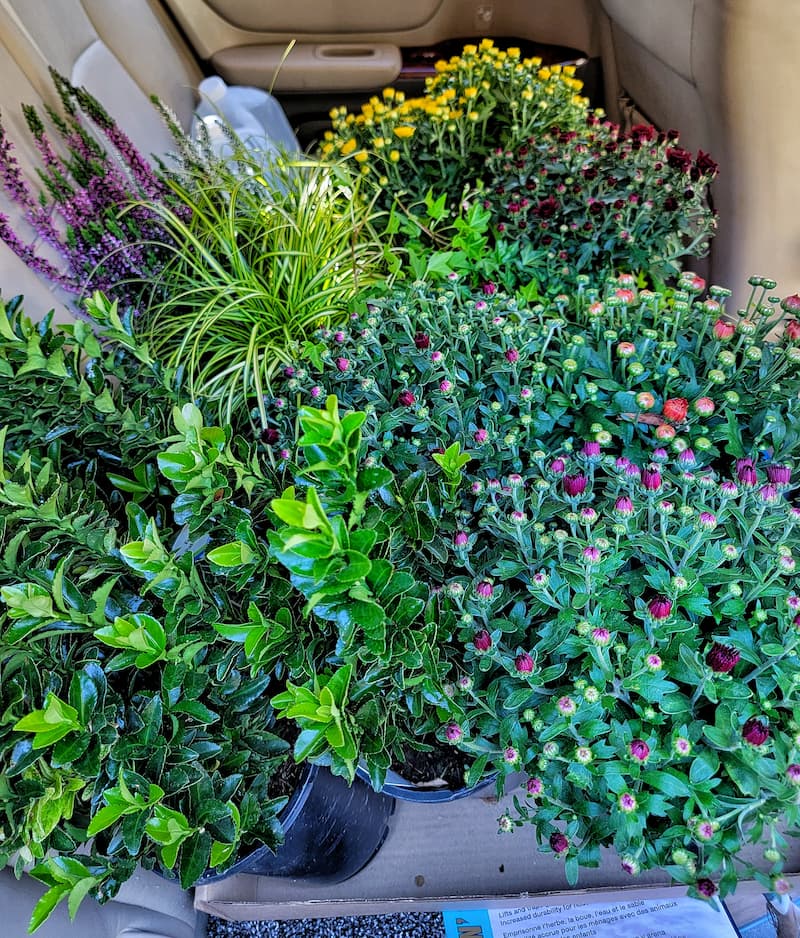
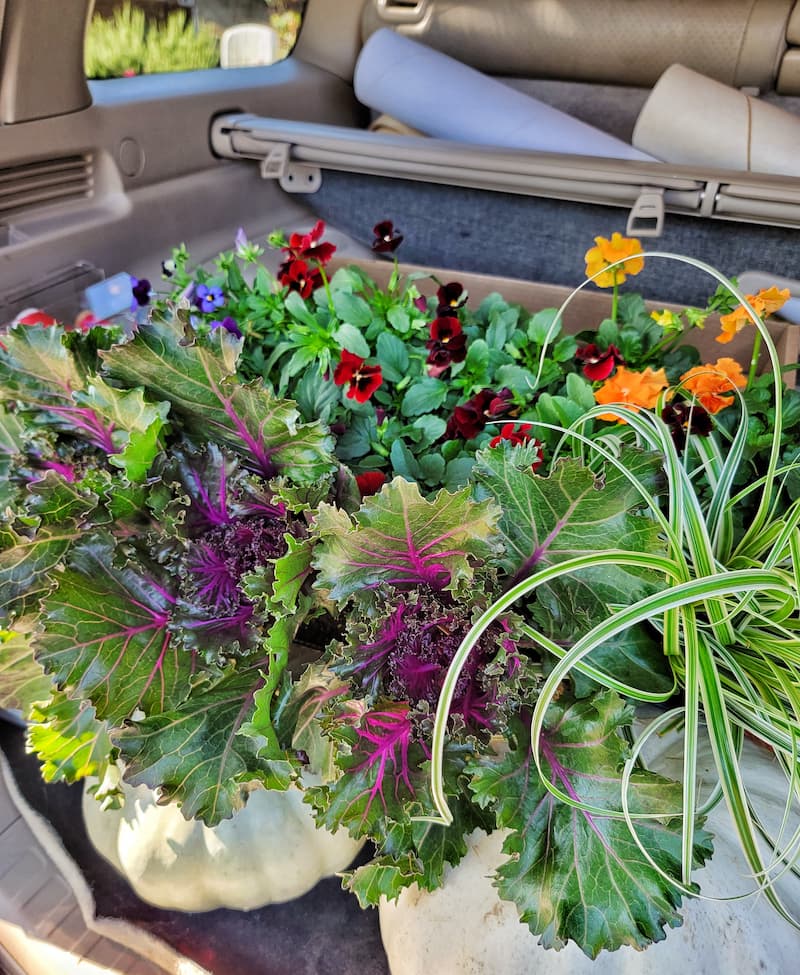
My favorite annuals for fall are…
Be sure to water any new plants until the rain comes.
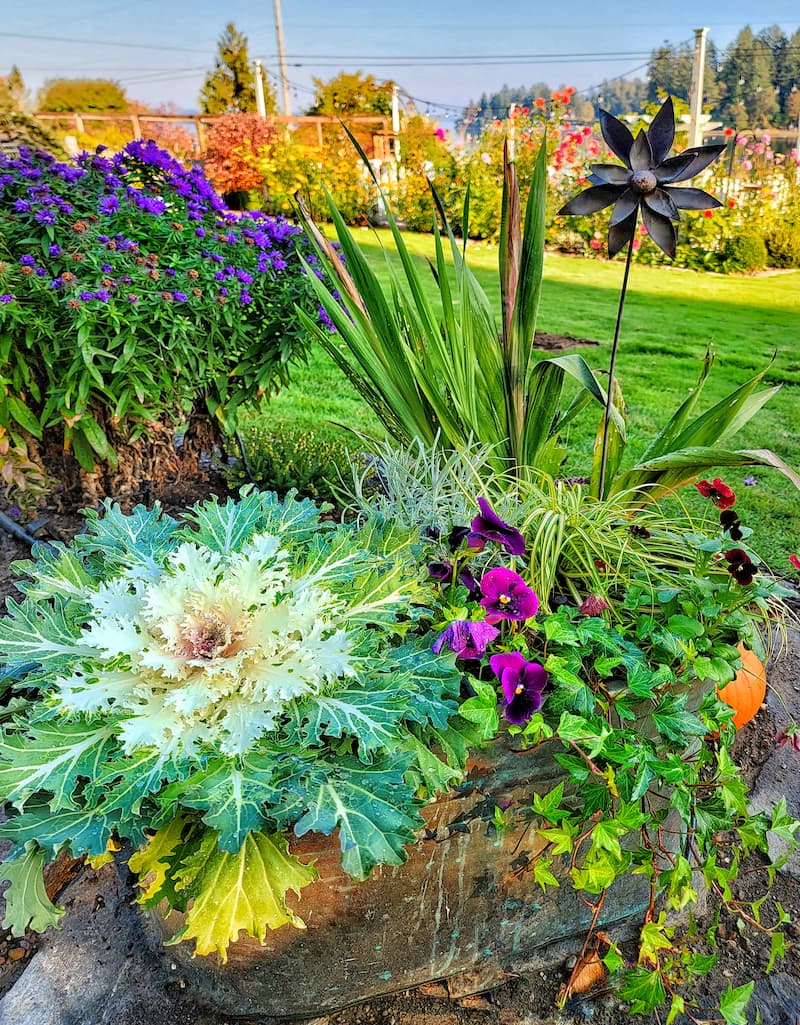
Fall Flower Containers
You don’t need to be a Master Gardener to create gorgeous flower beds and window boxes.
It’s a great idea to mix annuals and perennials in your fall container gardens. Annuals will give you a beautiful pop of color. Perennial plants will give your containers interest during every season.
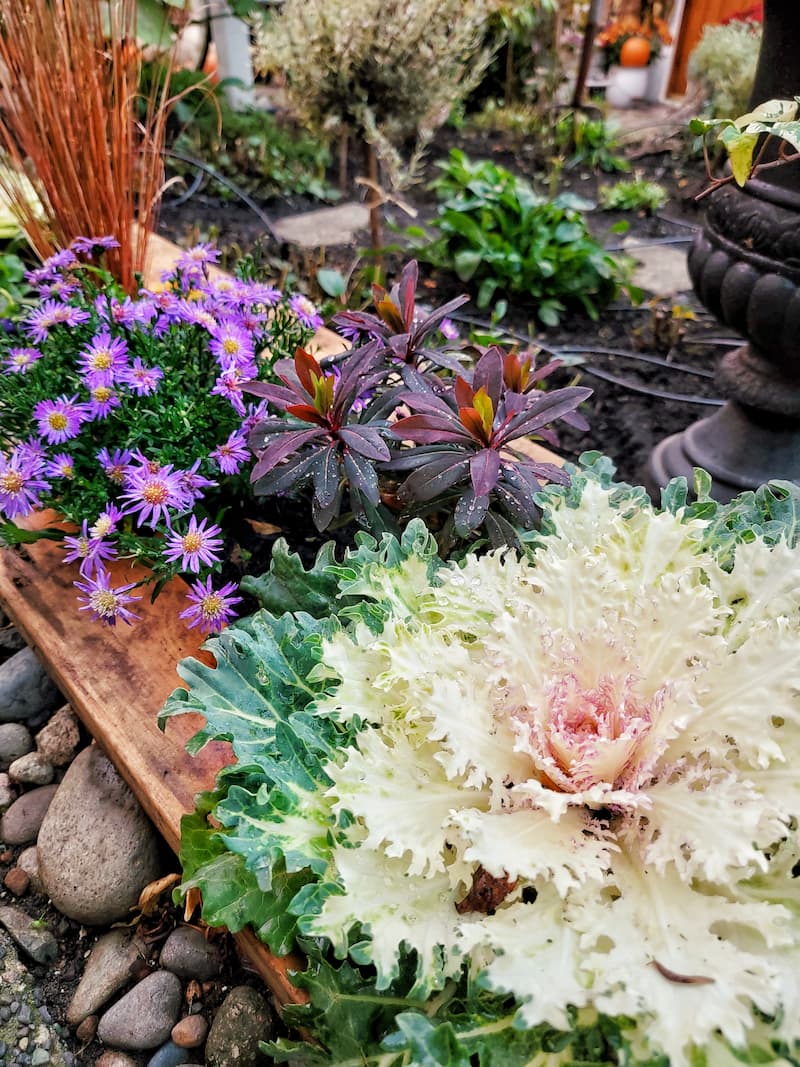
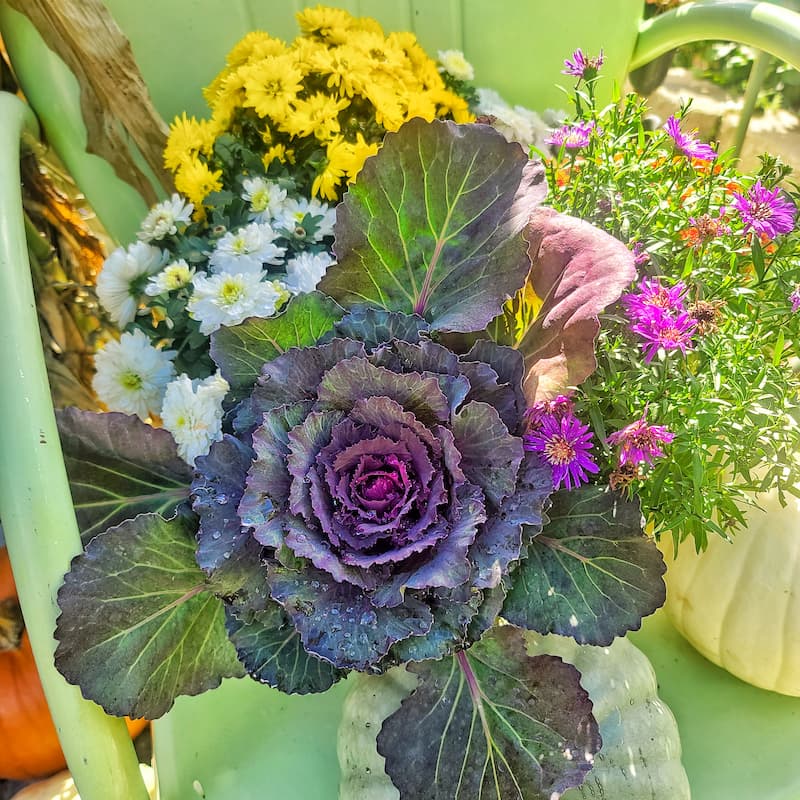
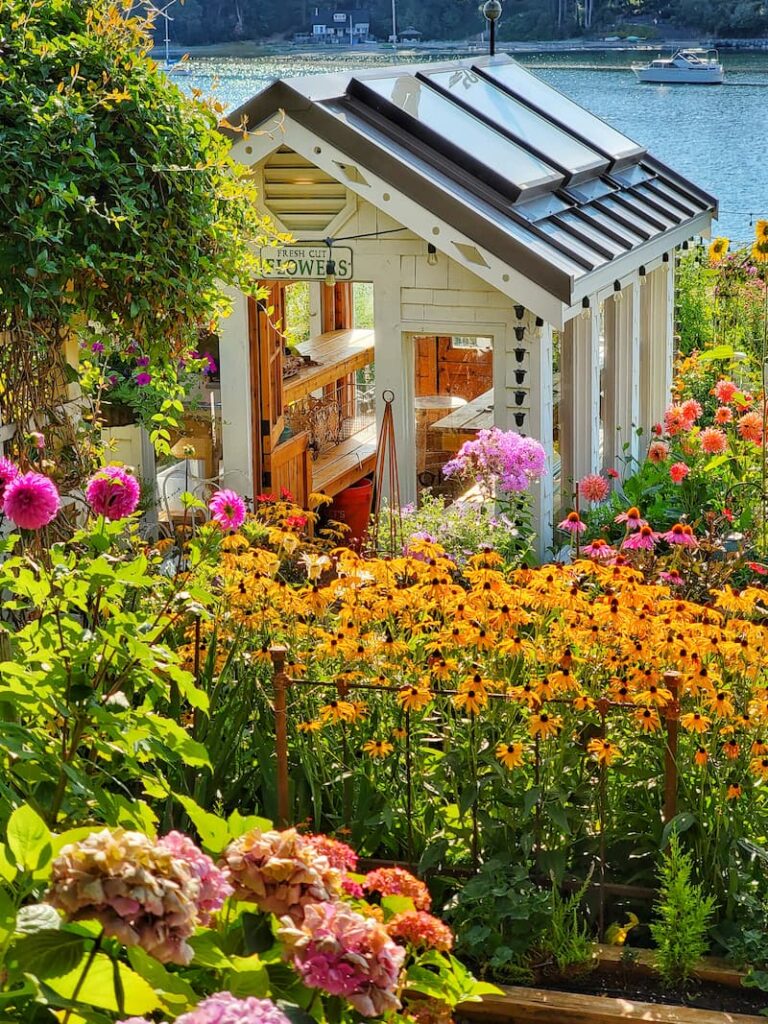
Greenhouse Garden
The fall garden tour continues with the garden area in front of the greenhouse. This is one of my favorite spaces and I spend a lot of time here.
It’s the space that I see from the kitchen so I try to always make it as interesting as possible.
In September, the black-eyed Susan perennials are in full force and brighten up the garden so gorgeously.
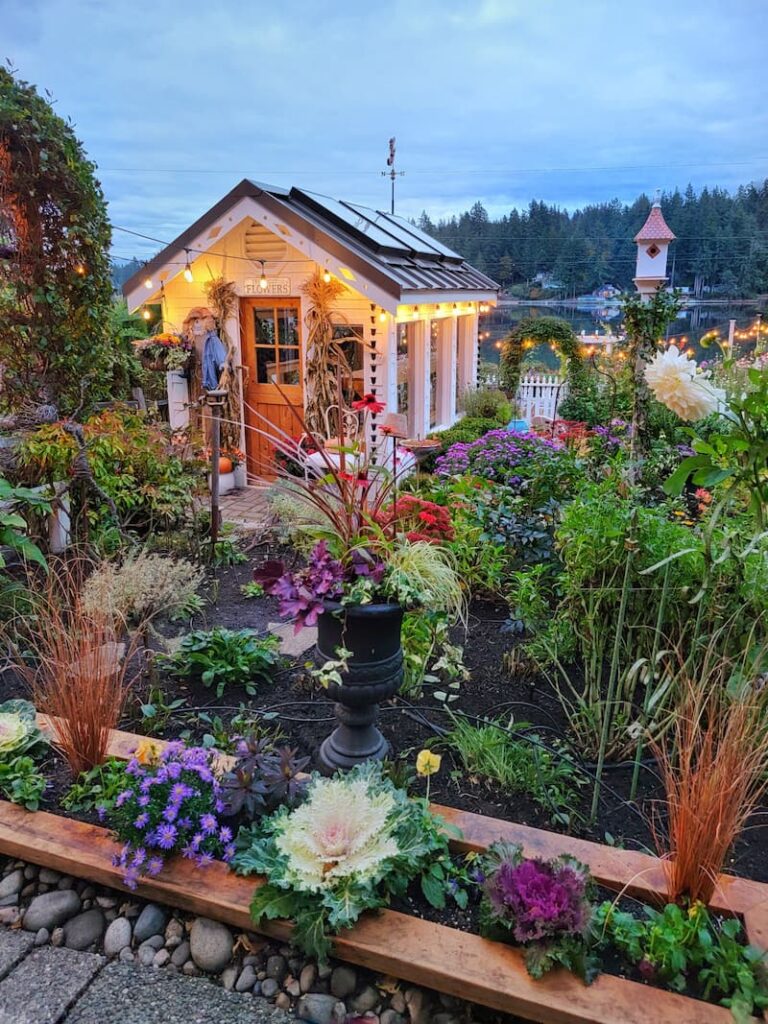
Here’s a very different view in the fall with asters, cabbages, and grasses.
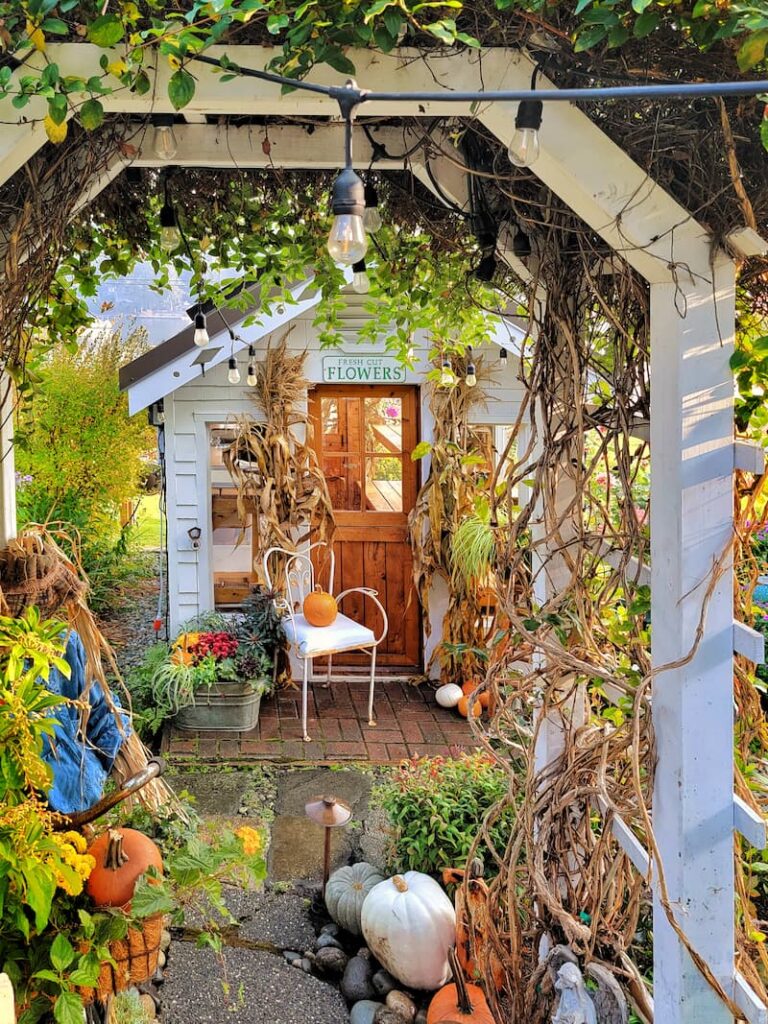
I always love setting different colors and sizes of pumpkins down both sides of the pathway border. Cornstalks always transform the space so perfectly.
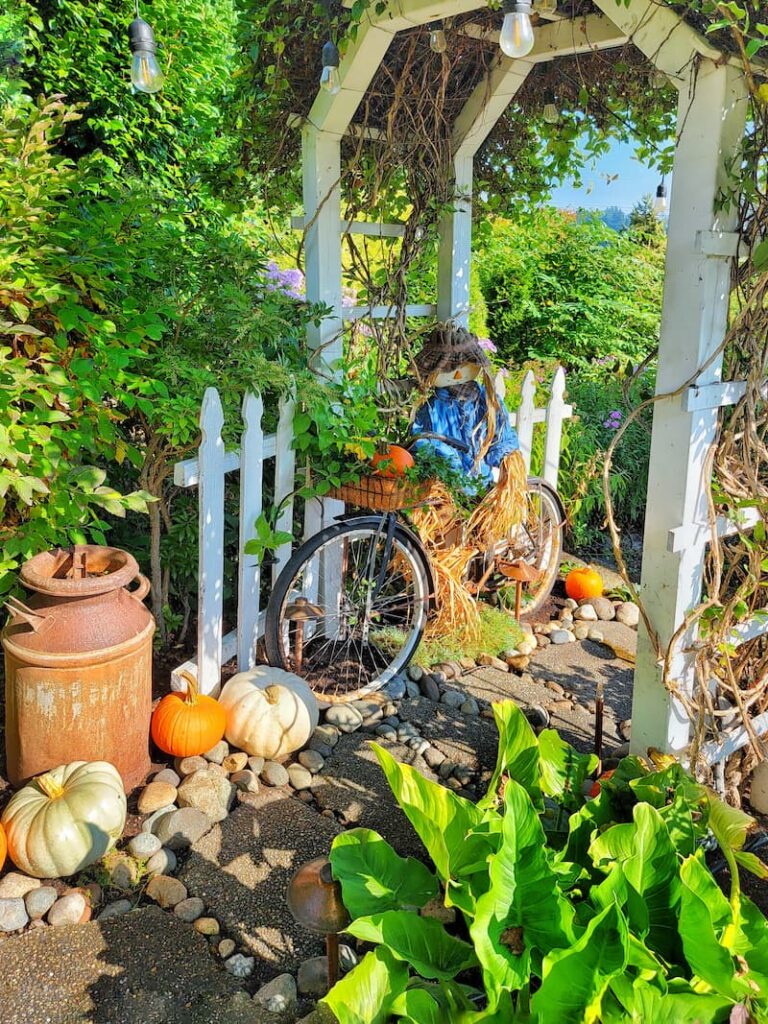
Lots of Fall Touches Wherever You Look
Fall is the time of year when there aren’t as many flowers in the garden so you need some other fun yard art and other touches to wow your outdoor space.
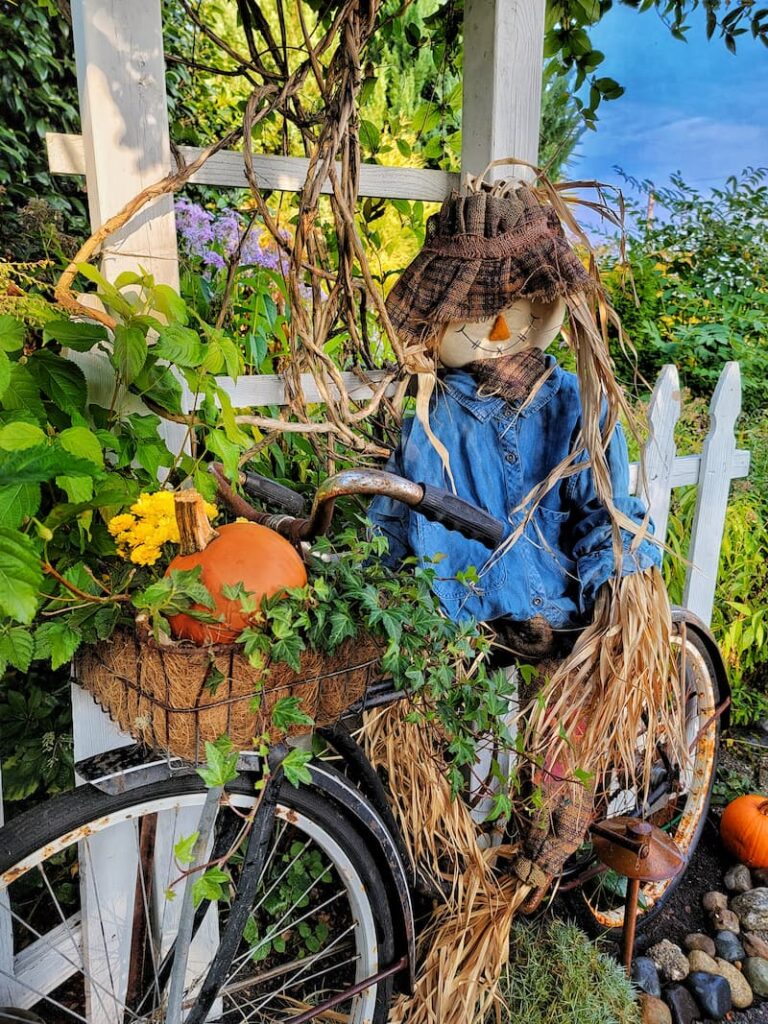
Adding a scarecrow in the garden is a fun way to transition to the autumn season.
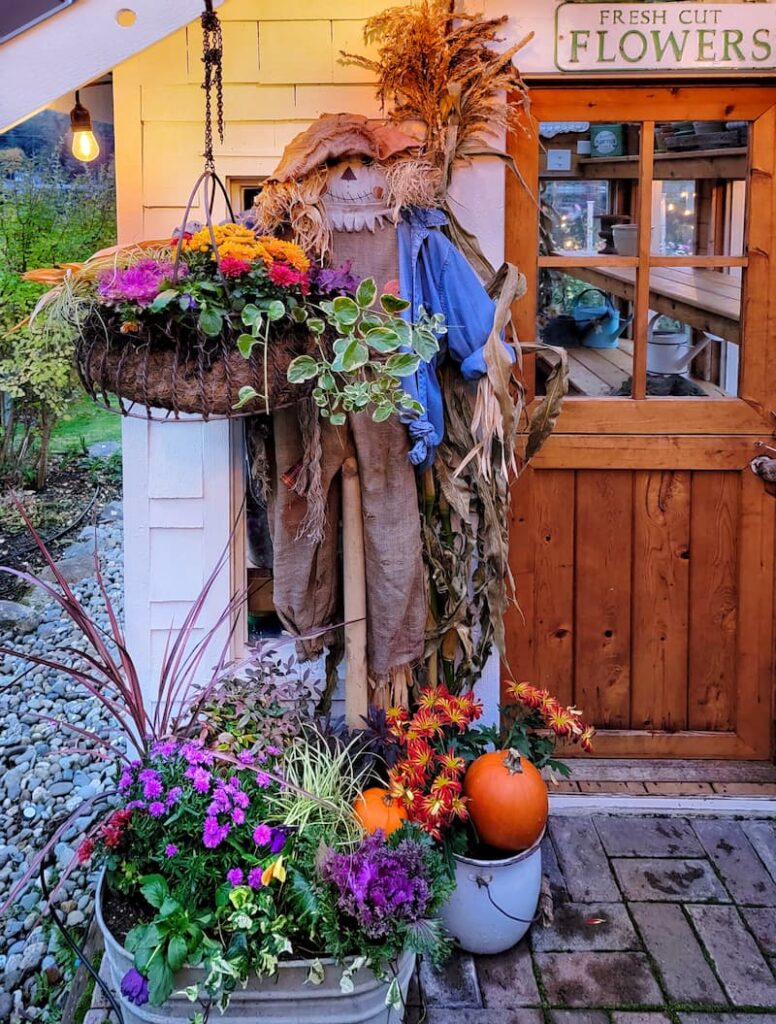
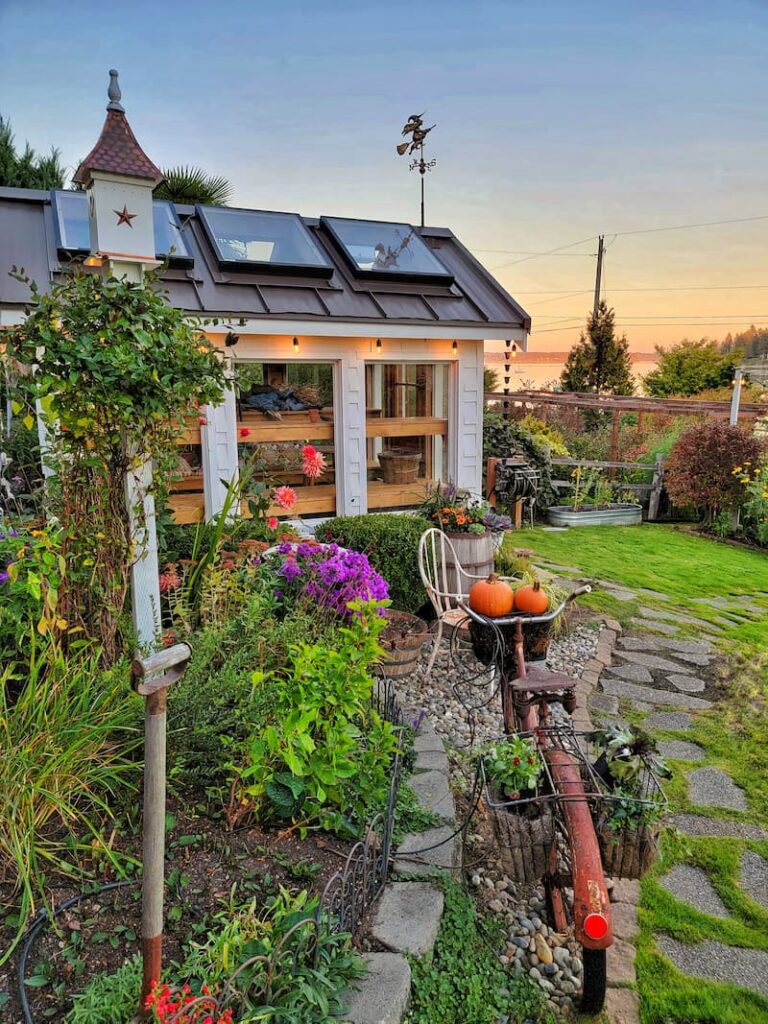
We change our weather vane every October through Halloween.
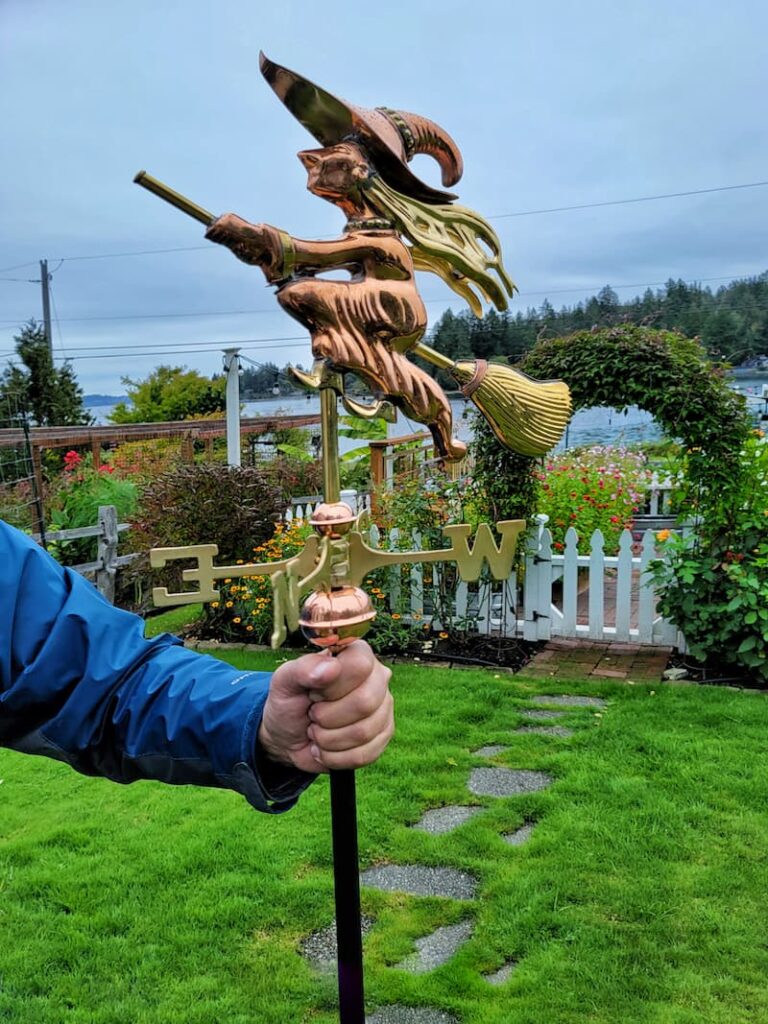
Isn’t this fall witch just the cutest? You can find one at Good Directions.
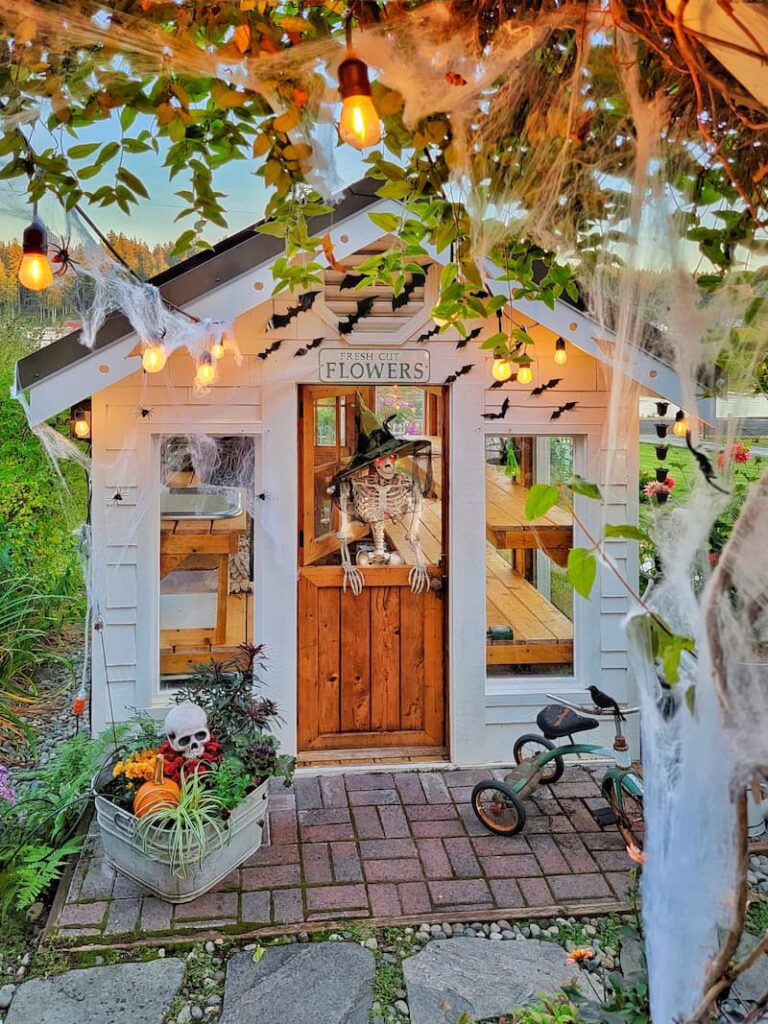
Halloween
I have never decorated for Halloween either inside or outside.
There are so many Instagrammers and bloggers who inspired me to try my hand at decorating the greenhouse and walkway.
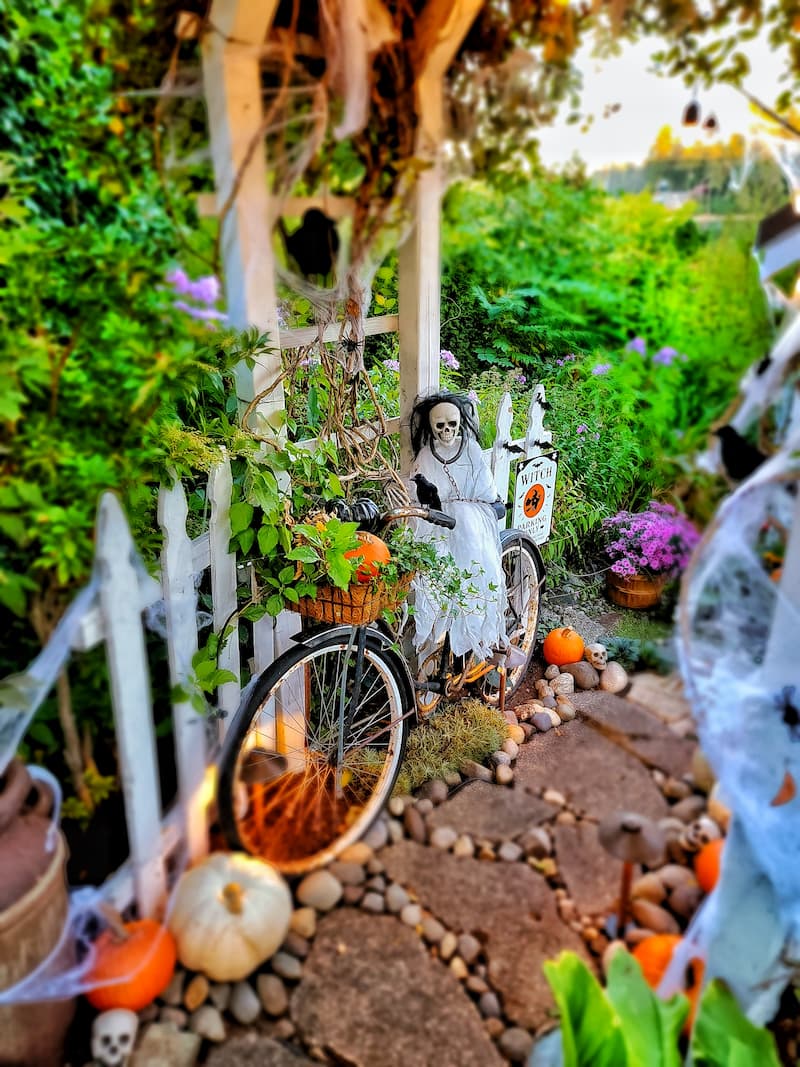
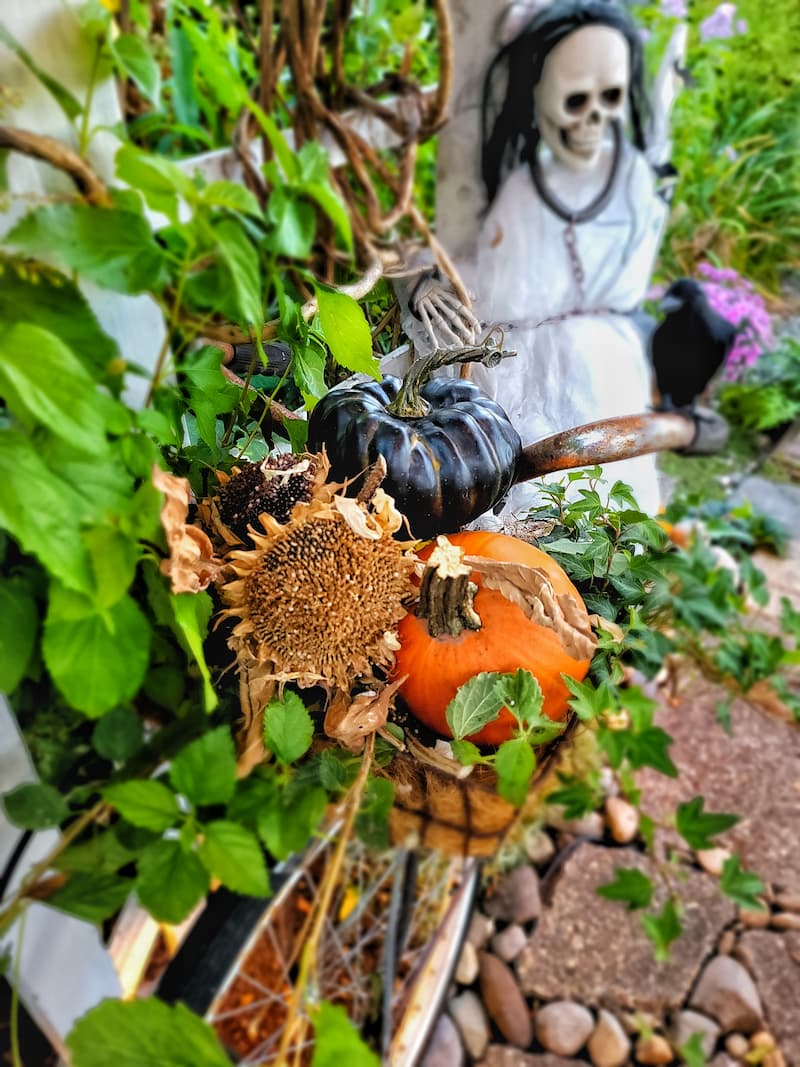
You can see more pictures of my spooky greenhouse and path HERE.
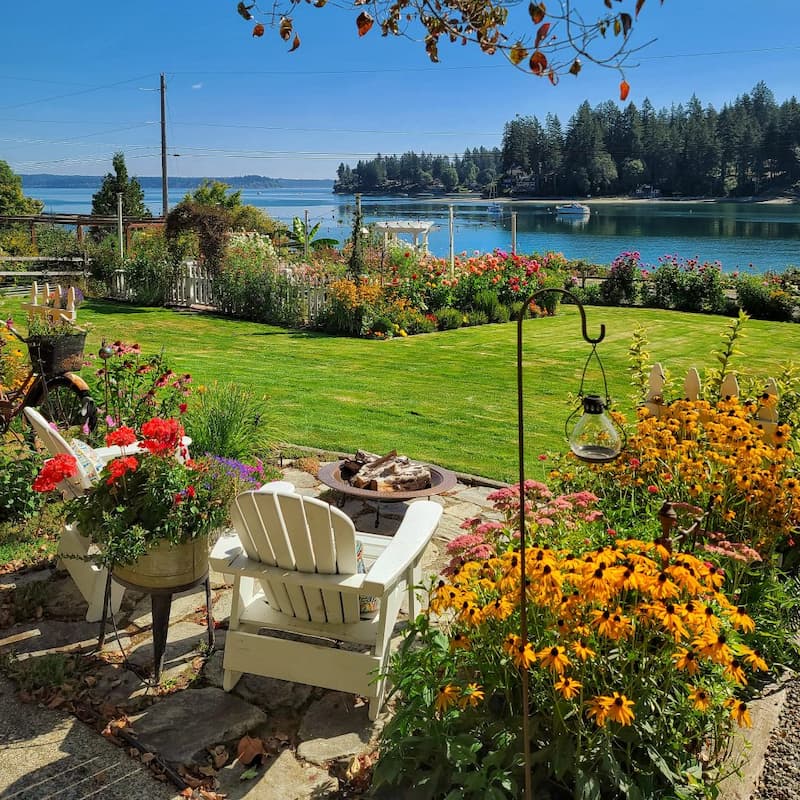
Preparing for Winter
The gardening season is just about done but there are still certain things that will make a real difference in how your spring garden performs.
If you haven’t already, you can check out my favorite fall garden tips for preparing for winter.
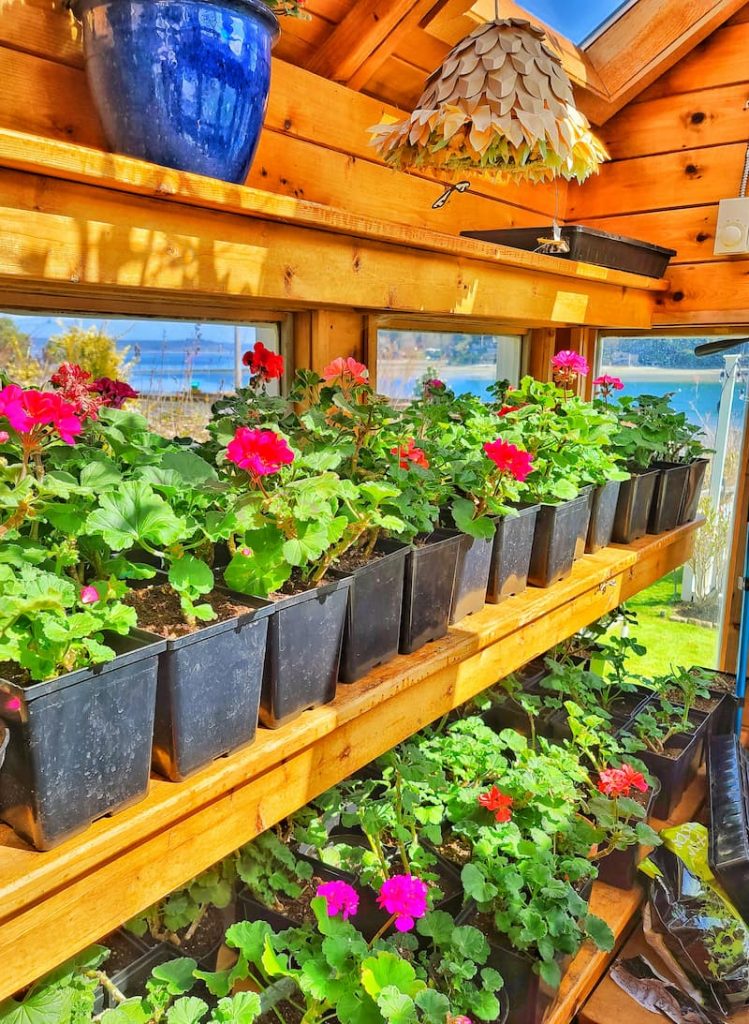
Geraniums
If you haven’t already done so, now is a good time to transplant your geraniums to the greenhouse for overwintering. This is one of the easiest ways to save money for next year.
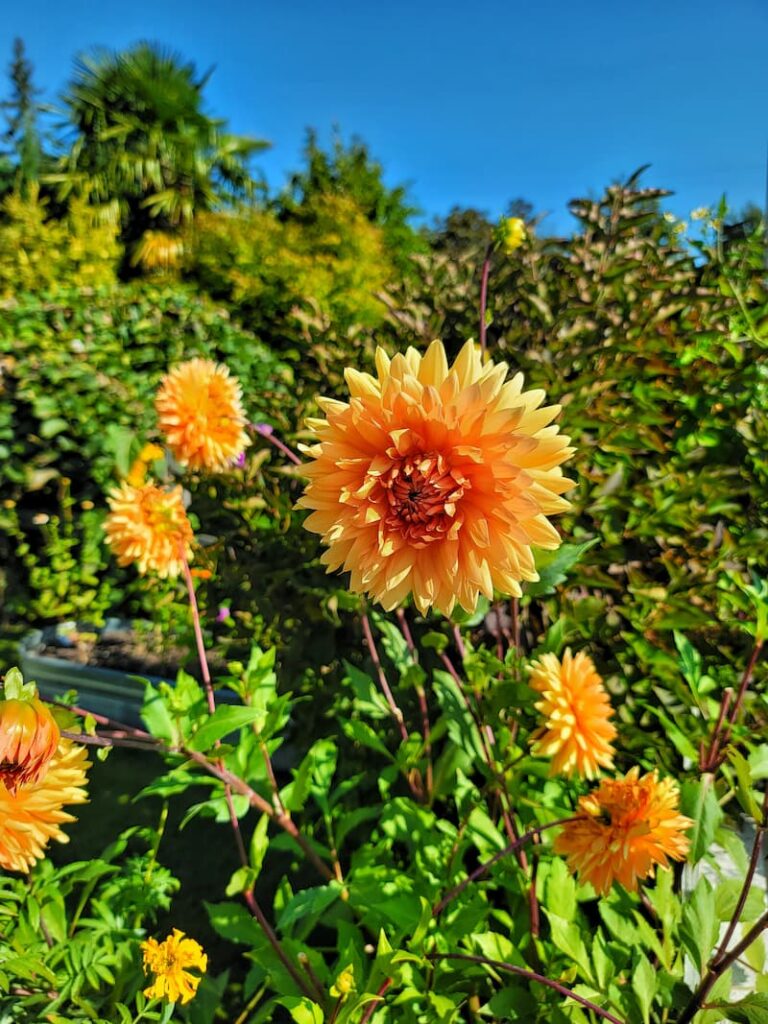
Dahlias
These gorgeous blooms are late in the summer season to start but one of the last to leave the garden.
Most years my dahlias will last through October. Either a heavy rain or the first hard frost which will blacken the dahlias is the kiss of death.

A great way to ensure healthy soil is to mulch beds in the garden. Tuck your plants in for the winter and protect them during the colder months with a layer of mulch on top.
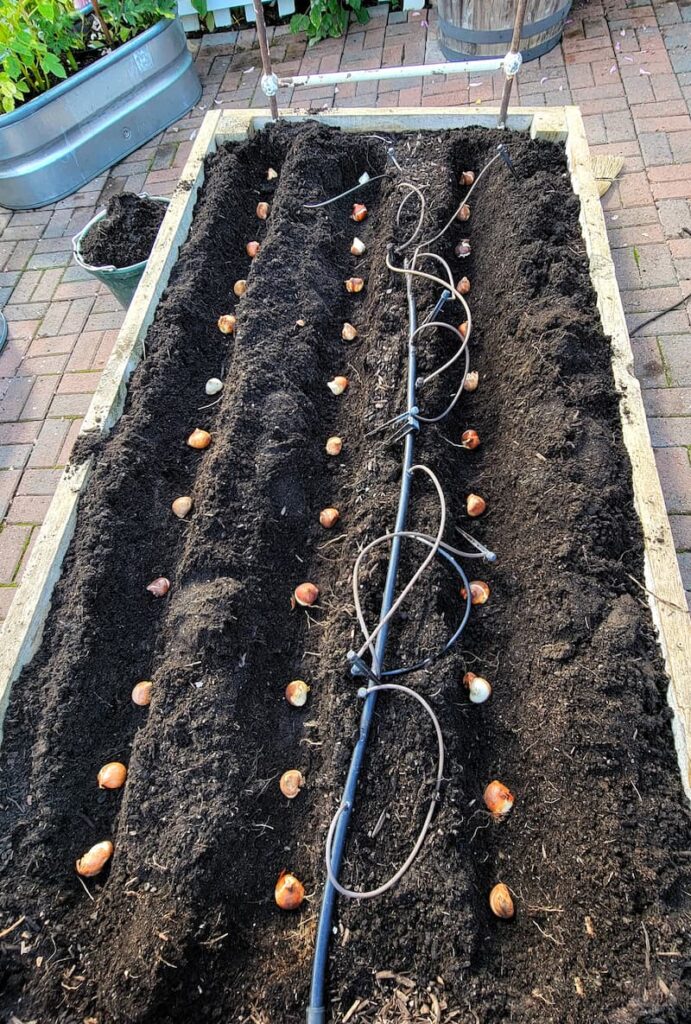
An excellent time for planting spring-blooming bulbs is before any threat of a hard frost.
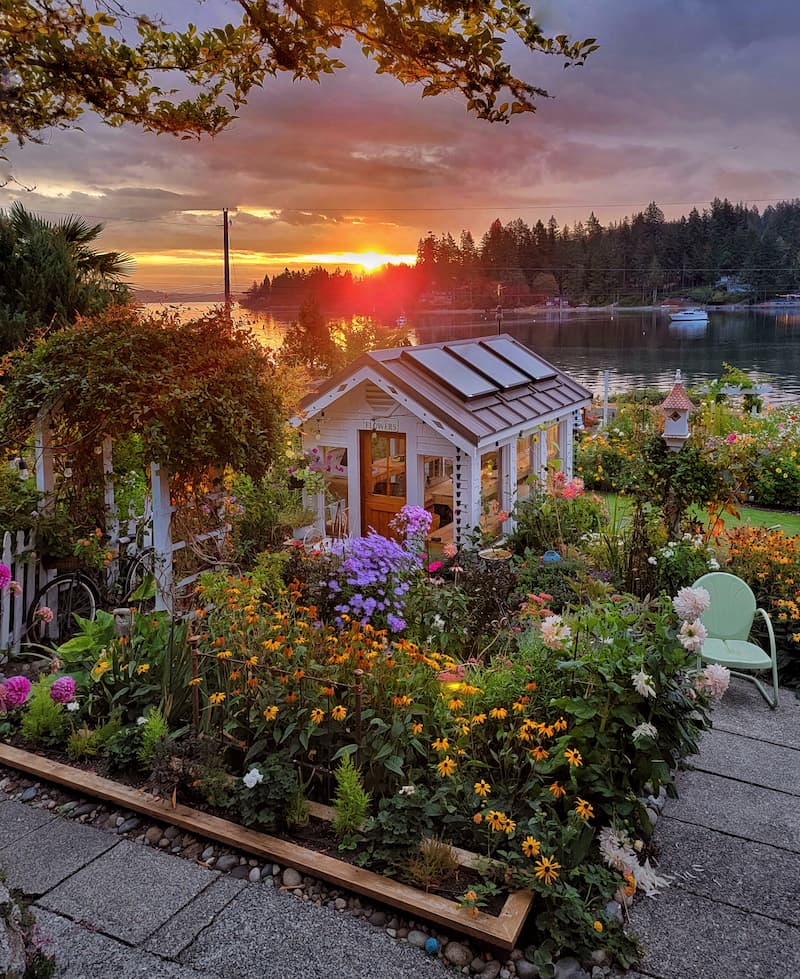
I hope you’ve enjoyed my Pacific Northwest fall garden tour and outdoor spaces. Did you pick up any ideas for your garden?
Remember that the tasks you do now will result in next spring’s garden appearance and performance.
If you have any questions or additional suggestions, please share them in the comments below. And be sure to share this blog post link with anyone who may find these gardening tips useful.
Until next time,
Happy Gardening!

I’m a self-taught hobby gardener. Everything I share on my blog is my opinion and what has worked for me.
Follow Me for More Inspiration
Shop my Amazon Storefront, LTK sources, and my favorite home decor, garden, and lifestyle products. When you purchase from one of my links, I earn a small commission, which helps me continue sharing all the content you expect on my blog.
Be sure to follow me on Pinterest, Instagram, Facebook, TikTok and LIKEtoKNOW.it. Do you like gardening? Join my Facebook Gardening Tips & Tricks group.

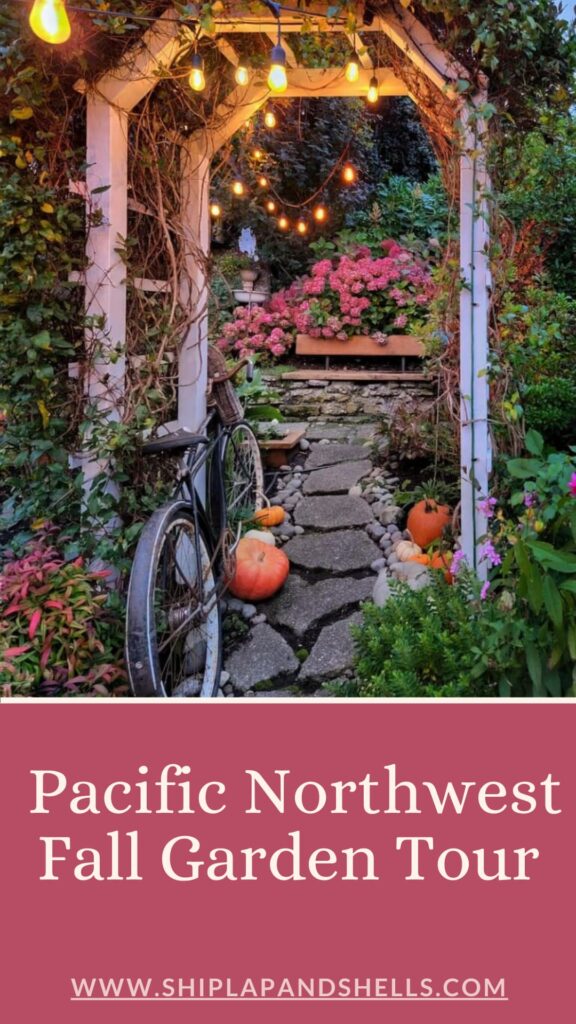


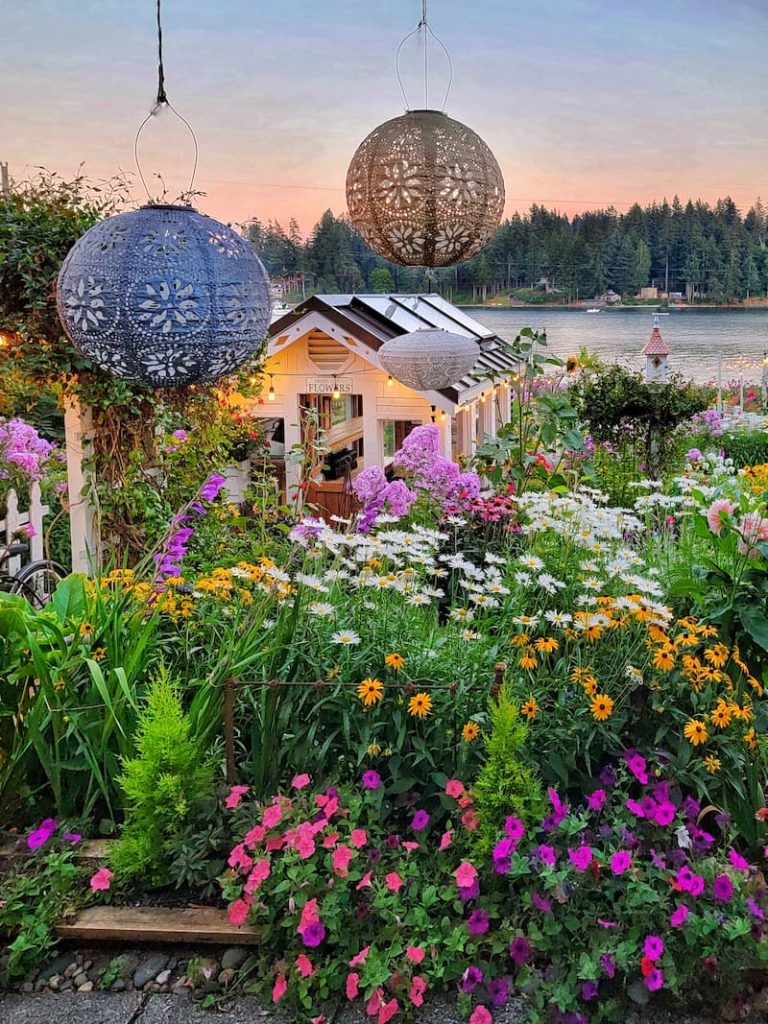
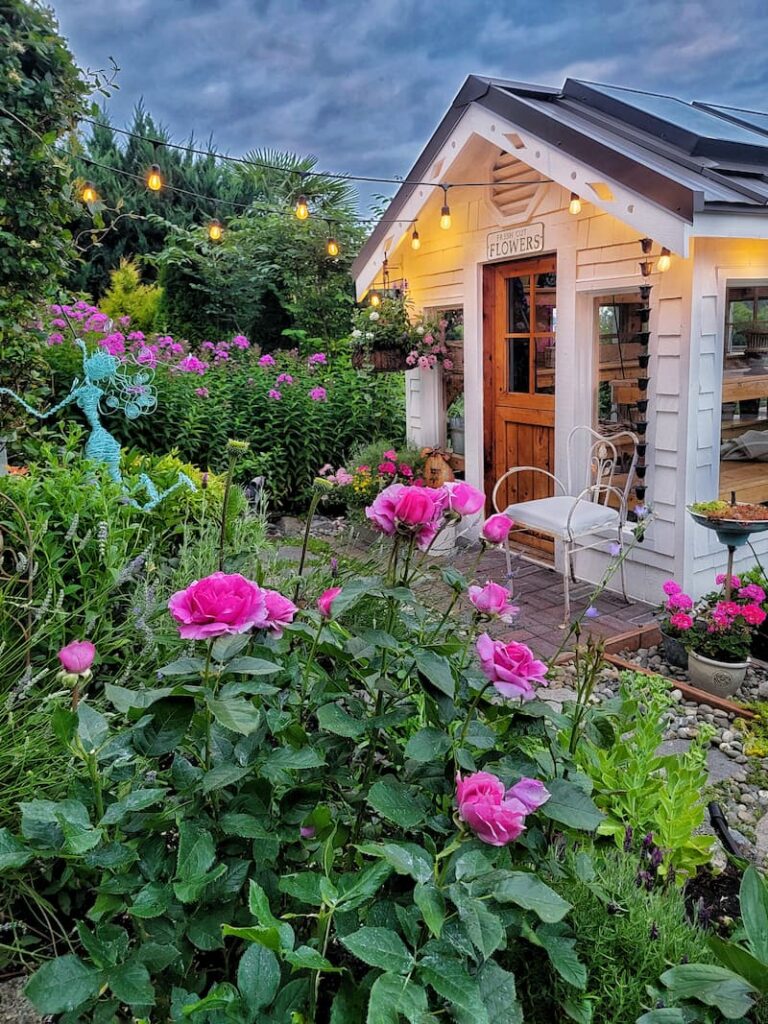
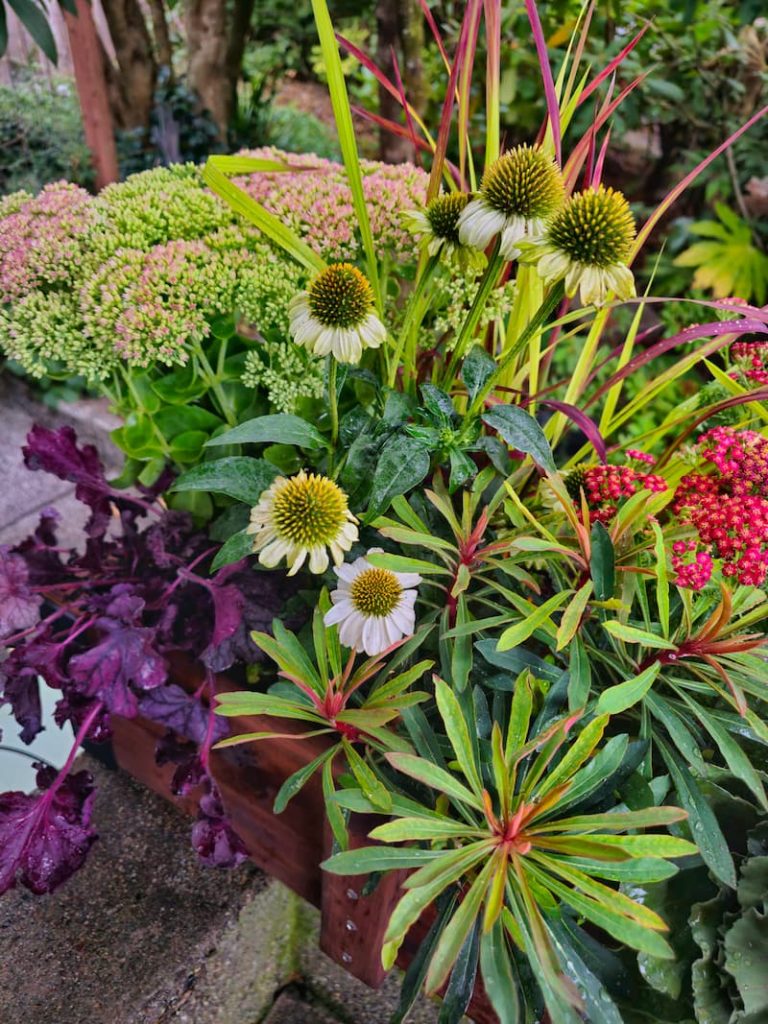
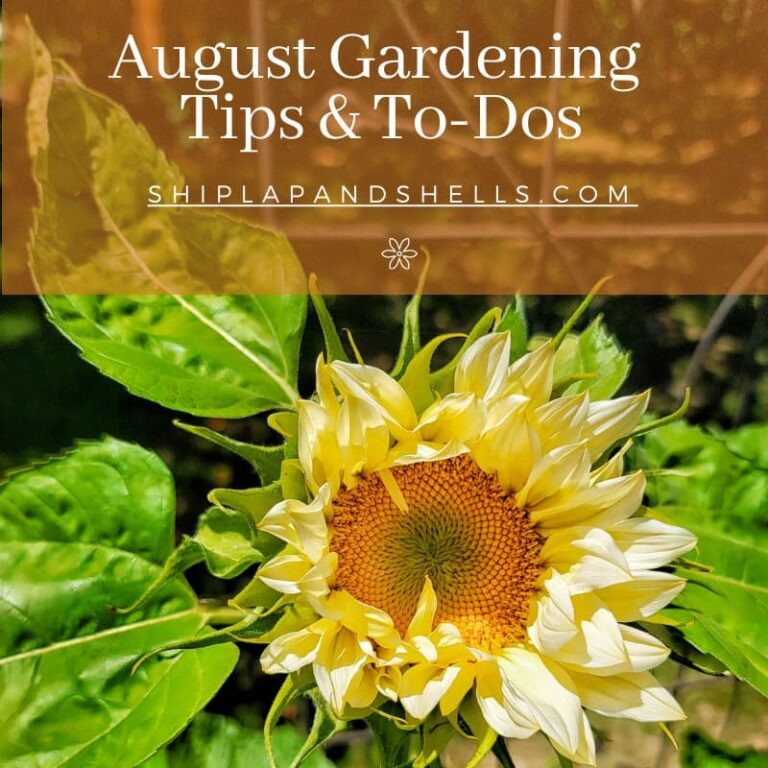
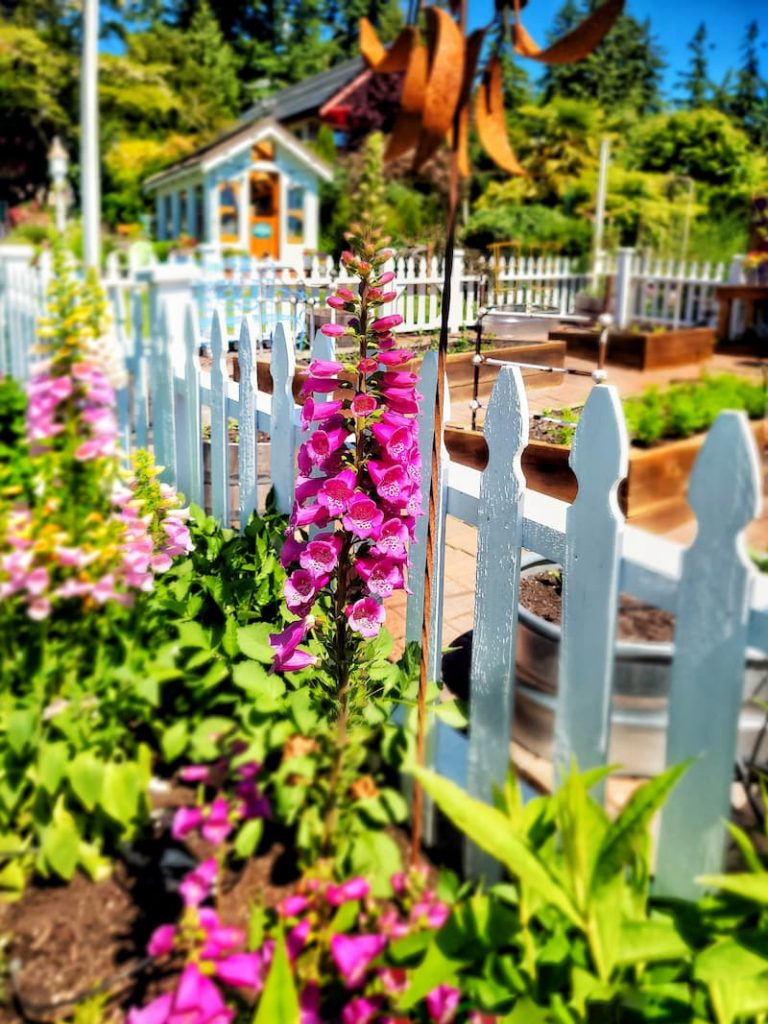
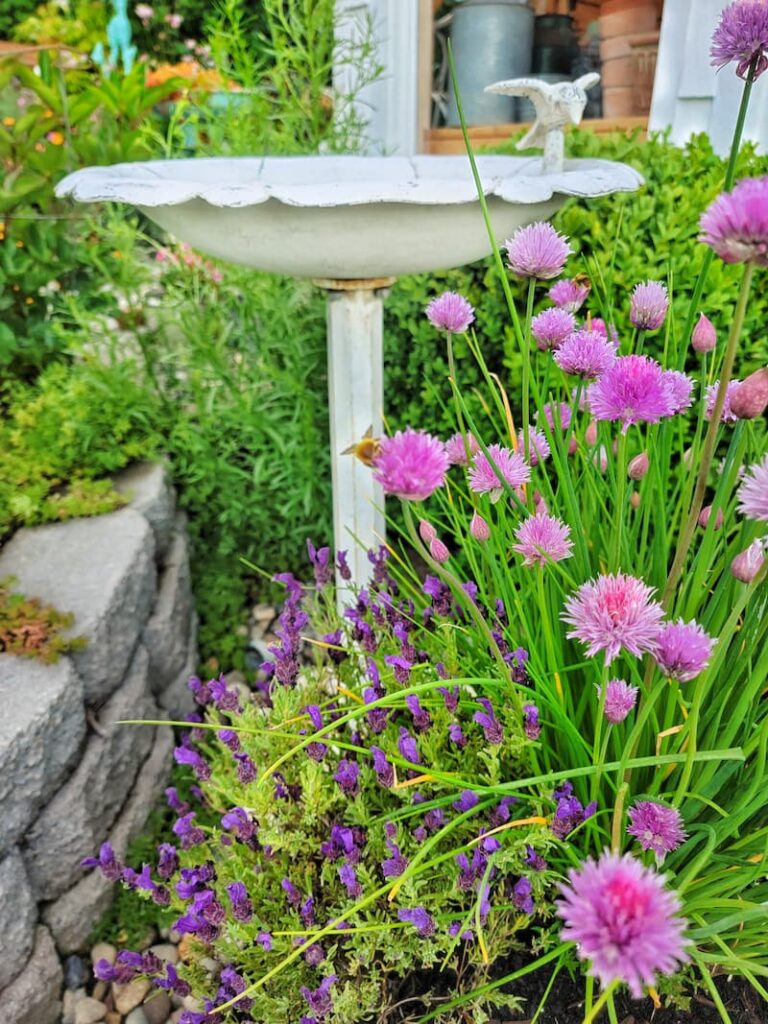
Gosh, your fall garden looks beautiful! Your gardens look beautiful in any season, though! I love the witch weather vane!! So cute!
Kim what a gorgeous garden tour!!! it all looks so beautiful! love it!!!